A clear, arguable thesis will tell your readers where you are going to end up, but it can also help you figure out how to get them there. Put your thesis at the top of a blank page and then make a list of the points you will need to make to argue that thesis effectively.
For example, consider this example from the thesis handout : While Sandel argues persuasively that our instinct to “remake”(54) ourselves into something ever more perfect is a problem, his belief that we can always draw a line between what is medically necessary and what makes us simply “better than well”(51) is less convincing.
To argue this thesis, the author needs to do the following:
- Show what is persuasive about Sandel’s claims about the problems with striving for perfection.
- Show what is not convincing about Sandel’s claim that we can clearly distinguish between medically necessary enhancements and other enhancements.
Once you have broken down your thesis into main claims, you can then think about what sub-claims you will need to make in order to support each of those main claims. That step might look like this:
- Evidence that Sandel provides to support this claim
- Discussion of why this evidence is convincing even in light of potential counterarguments
- Discussion of cases when medically necessary enhancement and non-medical enhancement cannot be easily distinguished
- Analysis of what those cases mean for Sandel’s argument
- Consideration of counterarguments (what Sandel might say in response to this section of your argument)
Each argument you will make in an essay will be different, but this strategy will often be a useful first step in figuring out the path of your argument.

Strategy #2: Use subheadings, even if you remove them later
Scientific papers generally include standard subheadings to delineate different sections of the paper, including “introduction,” “methods,” and “discussion.” Even when you are not required to use subheadings, it can be helpful to put them into an early draft to help you see what you’ve written and to begin to think about how your ideas fit together. You can do this by typing subheadings above the sections of your draft.
If you’re having trouble figuring out how your ideas fit together, try beginning with informal subheadings like these:
- Introduction
- Explain the author’s main point
- Show why this main point doesn’t hold up when we consider this other example
- Explain the implications of what I’ve shown for our understanding of the author
- Show how that changes our understanding of the topic
For longer papers, you may decide to include subheadings to guide your reader through your argument. In those cases, you would need to revise your informal subheadings to be more useful for your readers. For example, if you have initially written in something like “explain the author’s main point,” your final subheading might be something like “Sandel’s main argument” or “Sandel’s opposition to genetic enhancement.” In other cases, once you have the key pieces of your argument in place, you will be able to remove the subheadings.
Strategy #3: Create a reverse outline from your draft
While you may have learned to outline a paper before writing a draft, this step is often difficult because our ideas develop as we write. In some cases, it can be more helpful to write a draft in which you get all of your ideas out and then do a “reverse outline” of what you’ve already written. This doesn’t have to be formal; you can just make a list of the point in each paragraph of your draft and then ask these questions:
- Are those points in an order that makes sense to you?
- Are there gaps in your argument?
- Do the topic sentences of the paragraphs clearly state these main points?
- Do you have more than one paragraph that focuses on the same point? If so, do you need both paragraphs?
- Do you have some paragraphs that include too many points? If so, would it make more sense to split them up?
- Do you make points near the end of the draft that would be more effective earlier in your paper?
- Are there points missing from this draft?
- picture_as_pdf Tips for Organizing Your Essay

Academic Writing
- Introduction
- Planning an Essay
- Basic Essay Structure
Writing an Essay
- Writing Paragraghs
- Plagiarism This link opens in a new window
Basic academic essays have three main parts:
- introduction
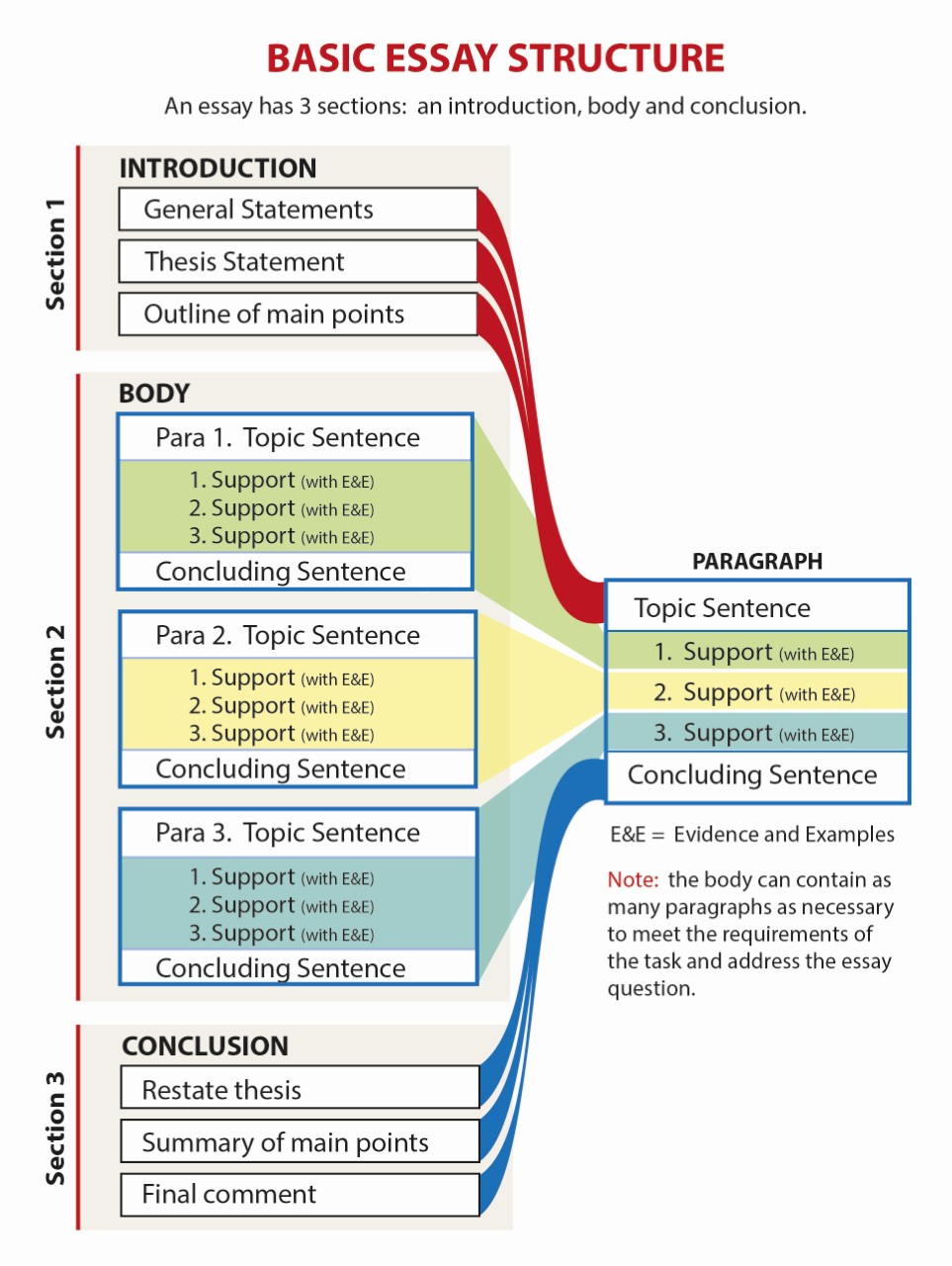
- Video Explanation
Writing an Introduction
- Section One is a neutral sentence that will engage the reader’s interest in your essay.
- Section Two picks up the topic you are writing about by identifying the issues that you are going to explore.
- Section Three is an indication of how the question will be answered. Give a brief outline of how you will deal with each issue, and in which order.
An introduction generally does three things. The first section is usually a general comment that shows the reader why the topic is important, gets their interest, and leads them into the topic. It isn’t actually part of your argument. The next section of the introduction is the thesis statement . This is your response to the question; your final answer. It is probably the most important part of the introduction. Finally, the last section of an introduction tells the reader what they can expect in the essay body. This is where you briefly outline your arguments .
Here is an example of the introduction to the question - Discuss how media can influence children. Use specific examples to support your view.

Writing Body Paragraphs
- The topic sentence introduces the topic of your paragraph.
- The sentences that follow the topic sentence will develop and support the central idea of your topic.
- The concluding sentence of your paragraph restates the idea expressed in the topic sentence.
The essay body itself is organized into paragraphs, according to your plan. Remember that each paragraph focuses on one idea, or aspect of your topic, and should contain at least 4-5 sentences so you can deal with that idea properly.
Each body paragraph has three sections. First is the topic sentence . This lets the reader know what the paragraph is going to be about and the main point it will make. It gives the paragraph’s point straight away. Next, come the supporting sentences , which expand on the central idea, explaining it in more detail, exploring what it means, and of course giving the evidence and argument that back it up. This is where you use your research to support your argument. Then there is a concluding sentence . This restates the idea in the topic sentence, to remind the reader of your main point. It also shows how that point helps answer the question.

Writing a Conclusion
- Re-read your introduction – this information will need to be restated in your conclusion emphasizing what you have proven and how you have proven it.
- Begin by summarizing your main arguments and restating your thesis ; e.g. "This essay has considered….."
- State your general conclusions, explaining why these are important.
- The final sentences should draw together the evidence you have presented in the body of the essay to restate your conclusion in an interesting way (use a transitional word to get you started e.g. Overall, Therefore).
The last section of an academic essay is the conclusion. The conclusion should reaffirm your answer to the question, and briefly summarize key arguments. It does not include any new points or new information.
A conclusion has three sections. First, repeat the thesis statement . It won’t use the exact same words as in your introduction, but it will repeat the point: your overall answer to the question based on your arguments. Then set out your general conclusions , and a short explanation of why they are important. Finally, draw together the question, the evidence in the essay body, and the conclusion. This way the reader knows that you have understood and answered the question. This part needs to be clear and concise.

- << Previous: Planning an Essay
- Next: Writing Paragraghs >>
- Last Updated: Oct 3, 2023 11:15 AM
- URL: https://bcsmn.libguides.com/Academic_Writing
- Essay Guides
- Basics of Essay Writing
Essay Structure: Tips and Examples
- Speech Topics
- Essay Topics
- Other Essays
- Main Academic Essays
- Research Paper Topics
- Basics of Research Paper Writing
- Miscellaneous
- Chicago/ Turabian
- Data & Statistics
- Methodology
- Admission Writing Tips
- Admission Advice
- Other Guides
- Student Life
- Studying Tips
- Understanding Plagiarism
- Academic Writing Tips
- Basics of Dissertation & Thesis Writing
- Research Paper Guides
- Formatting Guides
- Basics of Research Process
- Admission Guides
- Dissertation & Thesis Guides

Table of contents
Use our free Readability checker

You may also like

Essay structure is the overall organization of ideas in writing. It is a framework that helps students to sort out their ideas and express them clearly. A clear essay structure is essential to ensure a logical flow of arguments, which in turn, makes it easier for readers to follow the discussion.
Understanding how to structure an essay is crucial to communicate your arguments effectively. In this article, we'll guide you through various essay structure examples and offer practical tips to help you structure your essay effortlessly.
By having a good grasp of essay structure, you can improve your writing by creating essays that are both organized and captivating, leaving a lasting impact on your readers.
Our professional writing service can help! Buy an essay paper from our experts to receive quality results quickly.
Daniel Howard is an Essay Writing guru. He helps students create essays that will strike a chord with the readers.
A structure of an essay serves as a roadmap that directs how ideas are arranged and communicated within all parts of an essay to convey a message or argument in a clear, effective manner.
In essence, an essay structure definition refers to your writing plan that generally consists of an introduction, body, and conclusion.
An introduction establishes the tone and purpose of your writing. It includes a thesis statement, which is the central idea to be explored.
The body presents evidence, analysis, and supporting details to back up the thesis statement.
Finally, the conclusion provides a summary of key points by offering a fresh perspective on the thesis presented throughout the essay.
Making sure that each section of your work is well-organized and flows smoothly is essential in creating an effective structure.
The goal of essay structure is to organize and present ideas consistently. A clear and systematic essay writing structure ensures that ideas are communicated in a straightforward and engaging manner.
This holds readers’ attention and persuades them toward the intended message. Ultimately, a strong structure of an essay elevates the quality of writing by promoting clarity, conciseness, and coherence.
Basic structure of an essay comprises three parts:
The introduction sets the stage by providing an opening statement, background information, and a thesis statement, which serves as the central argument or key point.
The body of an essay consists of multiple paragraphs that present supporting ideas or arguments, each backed up by evidence and analysis to strengthen your viewpoint.
Finally, in an essay basic structure, the conclusion summarizes main points, providing a unique outlook on your thesis statement.
These 3 parts of an essay are crucial for creating an effective work, therefore all of them will be described below.
The introduction is the first part of an essay structure designed to introduce the topic by grabbing readers’ attention. The main purpose of an introduction is to:
Your thesis statement is where you present your central argument or key ideas. It must be concise, engaging, as well as, give readers an idea of what to expect in the essay.
Introduction is essential for creating a strong first impression by setting the stage for a successful essay. It should be in proportion to the essay length , with longer papers needing more detailed introductions.
>> Read more: How to Start an Essay Introduction
A thesis statement is a key argument or primary concept that an essay is built upon. It is typically presented in the introduction of an essay structure and serves as a roadmap for the rest of your writing.
A proper structure of a good essay requires a strong, concise thesis statement because it helps to stay focused and organized while presenting a clear argument to a reader.
It is important to ensure that the thesis statement is relevant, specific, and debatable to make an essay more engaging.
All content in your essay must directly relate to your thesis statement. Every paragraph should contribute to your overall argument as well as reinforce your central idea. Extraneous information has the potential to distract your reader or undermine the impact of your essay. It is, therefore, essential to ensure that each section is closely linked to your thesis.
Body paragraphs are critical to a good essay structure as they provide the main section where you present your argument or analysis.
To create an effective body paragraph, it's crucial to begin with a clear topic sentence that introduces the main idea or argument. The paragraph must include supporting evidence, analysis, along with explanations that add weight to the topic sentence.
An effective body paragraph should not only be well-organized but also transition seamlessly to next paragraph. Here’s what a basic body paragraph structure should include:
Effective essay body paragraphs should also:
While writing an essay structure, you should remember that body paragraphs are critical for developing a strong and persuasive rough draft .
Arranging your arguments in an essay requires strategic progression starting from the simplest claim to the most complex one. This means starting with the most basic, straightforward points and gradually building up to more intricate and complicated arguments. By doing this, you can guide your reader through your thought process by presenting a logical and coherent argument.
Conclusion marks the end of an essay with a summary of main points and a restatement of a thesis presented earlier.
It is a critical part in the structure of an essay as it offers closure to argument and strengthens the significance of main idea presented. Furthermore, a carefully crafted conclusion should make a strong impact on a reader by providing insights or recommendations for future research.
Your conclusion should be brief and concise. Avoid introducing new ideas or evidence that may distract from your main argument.
Wrapping up, a conclusion is a vital component among essay parts, which summarizes all central ideas together with arguments while delivering a powerful final message to readers. You may use our Paraphrase Tool if you need to rephrase a sentence or a whole section quickly.
>> Read more: How to Write a Conclusion For an Essay
Essay structures refer to different organizational patterns used in writing an essay. Here are some of the most common types of an essay structure used to convey ideas and arguments effectively:
Each essay structure has its characteristics and is suitable for specific types of essays.
Choosing the right structure can help you convey your ideas to readers.
Need help with your essays? Our professional writing service has got you covered! Order essay online from our skilled writers and get high-quality works that meet all of your academic requirements.
The chronological essay structure arranges essay parts in order of time, presenting information in a sequence it occurred. It is often used when writing about historical events or recounting personal experiences. A chronological approach is common in expository writing or narrative essay .
A template for this type of essay layout usually includes an introduction that sets the context and explains an essay's purpose. The body paragraphs then follow a logical order reflecting the chronology of all discussed events.
When using this structure type, it is essential to ensure that all events are presented logically.
Overall, the chronological essay structure is an effective way of presenting information in a clear, organized manner.
Chronological Essay Structure Template
Chronological Structure of an Essay Example
The compare and contrast essay structure is an organization technique that seeks to clarify both similarities and differences among two or more subjects.
This essay structure can be used for analyzing different types of literature, historical events, or scientific phenomena.
There are primarily two ways to organize a compare and contrast essay :
The alternating method involves discussing similarities and differences between two subjects in a structured and concise pattern. Each paragraph focuses on a specific aspect of comparison and contrast. For example, a paragraph may discuss a parallel between two subjects, while the following paragraph may discuss a difference.
The block method involves discussing one subject's similarities and differences before moving on to the next.
Both approaches have advantages and disadvantages. Therefore, your choice of method depends on the specific purpose of your writing as well as your preference.
The alternating essay structure is a method of organizing an essay where you compare two or more topics by alternating between them in each paragraph.
Each paragraph discusses a specific aspect or point of comparison/contrast between two topics.
The alternating structure is useful for presenting a balanced argument by highlighting both similarities and differences between two topics being compared.
This method helps to keep readers engaged. It allows a clear and organized presentation of ideas.
Alternating Essay Structure Template
Alternating Essay Structure Example
The block essay structure is an effective way to organize the structure for an essay.
It presents information about a particular topic in a single block, with each block containing an individual discussion point.
This structure is ideal for comparing and contrasting two topics, making it easier for readers to understand their differences and similarities. Discussing one topic in detail before moving on to the next, or alternating between them throughout, creates a clear as well as dynamic structure.
Block Essay Structure Template
Example of a Block Essay Structure
The problems-methods-solutions essay structure helps writers organize their thoughts into a cohesive essay.
This format is designed to break down a problem and solution essay into three sections, each focusing on a specific element.
The first section is where you outline all issues or challenges being addressed. The second section is where you discuss various approaches or methods to address these problems. In your final section, present a solution or series of solutions to the problems identified in the Problems section.
Using this structure, you can present a clear and concise argument while providing a well-reasoned solution.
Problems-Methods-Solutions Structure Template
Problems-Methods-Solutions Structure Example
Signposting is the process of using clear and concise language to guide readers through the structure of an essay. It will help you to structure your essay effectively by clarifying key points, arguments, and transitions between different parts of an essay.
By using signposting, you can make your works more organized and easy to follow. Signposting also ensures that your piece has a clear structure and helps readers to understand your thought process.
An overview serves as a summary or outline of all key points covered in your academic writing. As a part of the structure of essay writing it functions as a roadmap for readers to follow along with the structure and progression of your piece.
When starting to write an essay, it is essential to provide an overview of the structure.
An overview allows readers to understand the purpose and scope of an essay and the key arguments and evidence that will be presented. Mostly it is written in present tense.
Essay Overview Example
Transition words play a vital role in creating a coherent and well-structured essay, seamlessly linking different parts of the essay together by ensuring a smooth and logical flow of ideas.
Transition words can also create a logical structure within an essay, guiding readers through the argument and making your overall message clearer.
Here is a list of some common transition words:
By using transition words effectively, you can improve the clarity and coherence of your writing, making it easier for readers to follow and understand their ideas.
Here are a few actionable tips that will help you organize your writing.
This essay structure checklist ensures that your essay is well-organized, easy to follow, and effectively communicates your main argument.
How an essay should look is an essential aspect of effective essay writing. Different structures and methods can organize an essay logically and coherently. In addition, using an example of essay structure can help to easily create a well-structured essay.
Understanding the structure of writing an essay is essential for creating a well-organized and coherent piece of writing.Using tips and an example for essay structure, you can enhance your writing skills and produce a clear and concise essay.
Your next steps will involve creating an outline for an essay and composing your own piece. Make sure to check our blog on how to write an essay to complete this assignment with ease.
- Introduction
- Hook your audience
- Provide background information
- Establish the tone and focus
- Introduce a thesis statement.
- Topic sentence
- Supporting evidence
- Smooth transitions.
- Use strong, varied sentence structures
- Avoid repetition
- Include proper citations to support the evidence presented.
- Chronological
- Cause and effect
- Compare and contrast
- Problem-solution.
- Context and background information
- Purpose and thesis statement
- Event or situation in chronological order
- Supporting evidence or details
- Next event or situation in chronological order
- Summarize key points
- Final reflection or insight
- A brief overview of internet and its importance
- Thesis statement: This essay will explore the history of internet, from its origins to its current state.
- Early stages of internet, including its development by the US government
- ARPANET and email development
- Emergence of the World Wide Web as a platform for information sharing
- Development of HTML and launch of the first web browser
- Current state of internet, including its widespread use together with impact on society
- The rise of social media and mobile technology
- Recap of the history of internet and its significance
- Discussion of potential future developments along with their implications
- Alternating method
- Block method.
- Hook statement
- Brief background information
- Thesis statement
- Significance
- Restate thesis statement
- Summarize all main points
- Concluding thoughts or future implications
- Hook and background information about living in a city and living in a rural area
- Thesis statement: While both living in a city and living in a rural area have their advantages and disadvantages, the best choice for an individual depends on their lifestyle preferences and needs.
- City offers a better access to essential services
- Living in a rural area offers a quieter, more natural environment
- Cities offer more job opportunities
- Rural areas often have fewer but may offer opportunities in agriculture or natural resource industries
- Living in a city offers more diverse leisure and entertainment options
- Rural area offers more opportunities for outdoor activities and connection to nature
- The decision to live in a city or rural area depends on an individual's personal preferences and needs
- As technology advances and remote work becomes more common, the traditional city vs. rural divide may become less stark
- A brief overview of a topic
- Main idea and analysis
- Contrasting idea and analysis
- Summarize key points for Subject 1
- Summarize key points for Subject 2
- Final thoughts and call to action
- The food we eat has a profound impact on our health and well-being
- Thesis statement: While fast food is a convenient and quick option, healthy eating is essential for maintaining good health and preventing chronic diseases.
- Appeal of fast food as a quick option and variety
- Low nutritional value
- Perceived low cost of fast food
- Hidden costs in terms of health consequences
- Has all essential nutrients for good health
- Lower availability of healthy food options in low-income areas
- The cost is higher
- Better option in the long run
- While fast food is convenient and quick, it can be detrimental to our health, and it is important to make informed choices about our diets
- By making a conscious effort to choose healthy food options, we can take control of our health and lead happier, more fulfilling lives
- Briefly introduce the problem/topic
- Identify the problems related to your topic
- Use supporting evidence, examples, statistics
- Discuss main methods or approaches used before to address the problems
- Discuss the potential solutions or approaches
- Summarize all main points of your essay
- Restate your thesis statement
- Provide final thoughts or recommendations
- Briefly introduce the problem of climate change
- Causes and effects of climate change
- Thesis statement: This essay will examine the problems related to climate change, the methods used to address the issue, along with potential solutions to mitigate its effects.
- Rising temperatures, sea-level rise, as well as extreme weather events
- IPCC reports or NASA data
- Kyoto Protocol, carbon taxes, and renewable energy development
- Evaluation of the effectiveness of these methods
- Transitioning to renewable energy sources, implementing carbon capture and storage technologies, and adopting sustainable land use practices
- Statistics on the impact of implementing proposed solutions
- Importance and urgency of addressing climate change
- Need for collective action and policy changes to address the issue
- Additionally
- Furthermore
- In addition
- To structure your essay in a simple and effective manner, start by understanding the three parts of an essay: introduction, body, and conclusion. Each part of essay writing serves a specific purpose and can help you organize your ideas.
- Consider different structures of an essay, like the chronological, cause and effect, compare and contrast, and problem-solution, to choose the best fit for your topic.
- Utilize an essay template to keep your writing structured and focused. This can include templates for each part of the essay, such as an introduction template, body paragraph template, and a conclusion template.
- Use transitional words and phrases to connect different structures of an essay along with all parts of your writing, such as "however," "in addition," and "furthermore." This will help to create a cohesive flow of ideas throughout your essay.
- Keep your language clear and concise, avoiding unnecessary jargon or complicated phrasing. This can help to ensure that your writing is accessible and effective.
- Finally, review and revise your essay for clarity and coherence, paying close attention to different parts of essay writing and the structures of an essay. This will help to ensure that your essay is well-organized and effectively communicates your ideas.
- checkbox The introduction includes a clear thesis statement that presents my essay's main argument.
- checkbox The body paragraphs are organized logically and follow a clear and consistent structure.
- checkbox There is a topic sentence at the beginning of each body paragraph that relates to the thesis statement.
- checkbox The body paragraphs provide supporting evidence and examples to back up the main argument.
- checkbox There are clear and smooth transitions between each paragraph and section.
- checkbox The conclusion summarizes all main points of my essay and restates the thesis in a meaningful way.
- checkbox I have proofread my essay to ensure it is free of grammar and spelling errors.
- checkbox I have followed the essay structure format as my professor or instructor requires.
- checkbox I have used an essay framework or template to help me organize my thoughts and ideas.
- checkbox I have received feedback from peers, tutors, or instructors and made necessary revisions.
What Is an Essay Structure?
Essay structure purpose, basic essay structure: main parts of an essay, introduction , thesis statement, body paragraphs, essay structure types, chronological essay structure, compare and contrast structure, alternating essay structure, block essay structure, problems-methods-solutions structure , signposting to clarify essay structure, overview of an essay, transition words, essay structure writing tips, essay structure checklist, bottom line on essay structure writing.

This essay examines the global impact of local wars, exploring their causes and key examples. It discusses how these conflicts can have far-reaching economic, political, and social consequences. It concludes by suggesting steps to mitigate their impact by preventing escalation into larger global conflicts. Also, it highlights the importance of understanding the connections between seemingly isolated conflicts and the broader international context.
Note that this is a general template and can be adapted to fit a specific topic.

The Plagiarism Checker Online For Your Academic Work
Start Plagiarism Check
Editing & Proofreading for Your Research Paper
Get it proofread now
Online Printing & Binding with Free Express Delivery
Configure binding now
- Academic essay overview
- The writing process
- Structuring academic essays
- Types of academic essays
- Academic writing overview
- Sentence structure
- Academic writing process
- Improving your academic writing
- Titles and headings
- APA style overview
- APA citation & referencing
- APA structure & sections
- Citation & referencing
- Structure and sections
- APA examples overview
- Commonly used citations
- Other examples
- British English vs. American English
- Chicago style overview
- Chicago citation & referencing
- Chicago structure & sections
- Chicago style examples
- Citing sources overview
- Citation format
- Citation examples
- College essay overview
- Application
- How to write a college essay
- Types of college essays
- Commonly confused words
- Definitions
- Dissertation overview
- Dissertation structure & sections
- Dissertation writing process
- Graduate school overview
- Application & admission
- Study abroad
- Master degree
- Harvard referencing overview
- Language rules overview
- Grammatical rules & structures
- Parts of speech
- Punctuation
- Methodology overview
- Analyzing data
- Experiments
- Observations
- Inductive vs. Deductive
- Qualitative vs. Quantitative
- Types of validity
- Types of reliability
- Sampling methods
- Theories & Concepts
- Types of research studies
- Types of variables
- MLA style overview
- MLA examples
- MLA citation & referencing
- MLA structure & sections
- Plagiarism overview
- Plagiarism checker
- Types of plagiarism
- Printing production overview
- Research bias overview
- Types of research bias
- Example sections
- Types of research papers
- Research process overview
- Problem statement
- Research proposal
- Research topic
- Statistics overview
- Levels of measurment
- Frequency distribution
- Measures of central tendency
- Measures of variability
- Hypothesis testing
- Parameters & test statistics
- Types of distributions
- Correlation
- Effect size
- Hypothesis testing assumptions
- Types of ANOVAs
- Types of chi-square
- Statistical data
- Statistical models
- Spelling mistakes
- Tips overview
- Academic writing tips
- Dissertation tips
- Sources tips
- Working with sources overview
- Evaluating sources
- Finding sources
- Including sources
- Types of sources
Your Step to Success
Plagiarism Check within 10min
Printing & Binding with 3D Live Preview
Essay Structure – Format, Layout & Outline With Examples
How do you like this article cancel reply.
Save my name, email, and website in this browser for the next time I comment.
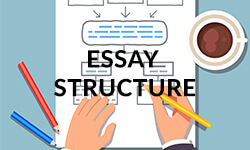
At the heart of every essay lies a structured framework that ensures the conveyance of ideas in a coherent and logical manner. The essay structure is the backbone of academic writing , guiding readers through the essay. A well-structured essay helps convey information seamlessly and enhances the reader’s comprehension of the topic. This article will delve into the essential components of essay structure and will answer frequently asked questions about essay structure.
Inhaltsverzeichnis
- 1 Essay structure in a nutshell
- 2 Definition: Essay structure
- 3 Parts of the essay structure
- 4 Essay structure examples
- 5 Different types
Essay structure in a nutshell
An essay structure is the organized way in which the writer’s ideas are presented in writing, ensuring that the reader can follow and understand the main points easily. Think of it like a skeleton that holds and shapes the content of the essay. The parts every essay includes are the introduction, body, and conclusion.
Definition: Essay structure
Essay structure has a lot to do with the way you have presented your thoughts and logic in an academic essay . For instance, you want to ensure that you present one idea at a time, and then support them with facts to convince your readers. A good essay structure should also use an active voice and conclude with thoughts that are focused on summarizing the aforementioned ideas. Furthermore, in the concluding paragraph, let your readers know your ground based on the subject.
To write a strong essay, you need to come up with coherent ideas and use them to create a striking argument. Your essay structure should be one that lures the reader into following what you have to say closely. In this bit, we have shared valuable tips to help you learn and use the right essay structure in your next creative writing.
Imagine you’re telling a friend a story.
- Beginning (introduction) : You set the scene. “Hey, I want to tell you about the time I went camping.”
- Middle (body) : You give the main details and events. “First, we set up the tent. Then, at night, we heard a strange noise…”
- End (conclusion) : You wrap up the story. “So, it turned out to be just a squirrel! But it was a memorable trip.”
The structure of nearly every single essay is simply like this:
- Introduction : Introduce your topic.
- Body : Explain the main points and details.
- Conclusion : Sum up everything you’ve said.
That’s the basic essay structure!

Parts of the essay structure
As mentioned above, the essential parts of a strong essay include the introduction, body, and conclusion. Below you will find a quick overview of the basic structure of an essay along with the content of each part.
Introduction
To give your essay a good introduction, you want to make it broad, but be careful not to go too broad. Moreover, this is the part in which you should share some background information related to the topic. However, you want to be careful not to start your argument just yet. Toward the end of your introduction, drop a thesis statement . This is also called the topic sentence and the most important part of your basic essay structure. Some writers also prefer throwing their thesis in the last sentence, but that relies greatly on your style of writing.
The body is the term used to refer to the paragraphs that come after the introduction but before the conclusion of the essay structure. A well-structured essay should feature multiple academic body paragraphs and include transition words . However, the overall length of the body of your academic essay is determined by the number of ideas you have to share. The details you use to back up your thoughts also have an impact on the overall length of the body of the essay structure. Make sure that you present one idea after the other, and then support them with substantial facts to convince your readers.
Your conclusion might look a bit similar to the introductory paragraph of the essay structure. In this section, make sure to restate your thesis because your readers might have lost it while reading the body. Furthermore, in the conclusion, you need to create a summary of the main points your essay touches. Do not forget to remind the readers of what you think about the entire subject in discussion of the essay structure.
Number of paragraphs
The number of paragraphs in an essay largely depends on the essay’s length, complexity, and specific requirements set by the instructor or the assignment. There is no set requirement for college essays. However, there are some general guidelines.
- Short essays: 500 words or fewer
- Standard college essays: 1,000 to 1,500 words
- Long essays: 1,500 words and above
Note: Be sure to use transition words when writing your paragraphs to enhance the flow and readability of your academic essay.
Essay structure examples
Several methods exist for organizing information in an essay. Typically, your assignment will specify the style to adopt. If uncertain about the appropriate approach, it’s wise to consult your instructor. However, these are all solid essay structures. In the following, you will learn about the basics of essay structure along with templates for essays.
Chronological essay structure
A chronological essay structure is an organization method where a series of events or steps are presented in the order they occurred in time, from the earliest to the latest or vice versa. It’s particularly useful for recounting events, like historical events, narrating stories, or detailing processes.
Note: It’s crucial to provide clear transitions and explanations, so the reader can easily follow the progression and understand the significance of each step or event.
- Introduction 1.1 Hook 1.2 Background 1.3 Thesis statement
- Body 2.1 First Event (the earliest in time) 2.1.1 Discussion 2.1.2 Consequences 2.2 Second Event 2.2.1 Discussion 2.2.2 Consequences
- Conclusion 3.1 Recap 3.2 Significance or impact of the topic 3.3 Closing statement (concluding thoughts or perspectives)
Topic: The development of personal computers over time.
- Introduction 1.1 Hook: From massive room-sized machines to sleek devices that fit in our pockets, personal computers have undergone a radical transformation in just a few decades.” 1.2 Background: Brief history of early computing devices and their initial applications. 1.3 Thesis statement: “The evolution of personal computers, from their inception to the present, has not only revolutionized technology but also drastically altered our daily lives.”
- Body 2.1 First Event (the earliest in time):** Introduction of the first personal computer. 2.1.1 Discussion: Description of the first personal computer, its creators, its design, capabilities, and its reception by the public. 2.1.2 Consequences: How the introduction of this computer paved the way for future technological developments and impacted industries. 2.2 Second Event: The graphical user interface (GUI) and the mouse. 2.2.1 Discussion: Origin of GUI, its integration into personal computers, and the invention of the mouse. 2.2.2 Consequences: The transformation of user experience, making computing more accessible and user-friendly, sparking wider adoption.
- Conclusion 3.1 Recap: A brief overview of the main events discussed in the essay. 3.2 Significance: Reflection on how the evolution of personal computers has affected work, education, communication, and entertainment. 3.3 Closing statement: “As we witness the relentless march of technological progress, it’s vital to appreciate the humble beginnings of personal computers and recognize their profound influence on modern society.”
Problems methods solution essay structure
A problems methods solution essay structure is designed to identify an issue, present a method to address it, and then propose potential solutions. This format is particularly effective for topics that involve challenges or issues that need addressing.
- Introduction 1.1 Introducing the problem 1.2 Background 1.3 Description of solution approach
- Problem 2.1 Precise definition 2.2 Causes 2.3 Effects
- Method 3.1 Previous approaches to the problem 3.2 New approach and why it’s better
- Solution 4.1 Application of the new method to the problem 4.2 Solution after doing so
- Conclusion 5.1 Effectiveness of solution 5.2 Description of implications 5.3 Closing statement
Topic: Plastic pollution in the oceans.
- Introduction 1.1 Problem: “Plastic pollution in the world’s oceans is an escalating crisis.” 1.2 Background: Overview of the scale of plastic waste dumped into the ocean annually and its sources 1.3 Description: “By employing innovative waste management and biodegradable alternatives, we may start to reverse this tidal wave of pollution.”
- Problem 2.1 Definition: “Plastic pollution refers to the accumulation of discarded plastic products in marine environments, leading to habitat destruction and harm to marine life.” 2.2 Causes: Indiscriminate disposal of plastic, lack of recycling initiatives, single-use plastic products, and ineffective waste management systems. 2.3 Effects: Entanglement and ingestion by marine animals, disruption of marine ecosystems, microplastics entering the human food chain.
- Method 3.1 Previous approaches: Use of ocean cleanup projects, awareness campaigns, and certain bans on plastic items. 3.2 New approach: “Promoting the mass adoption of biodegradable plastics and enhancing global waste management infrastructure, offering a more holistic and sustainable solution.”
- Solution 4.1 Launch of global initiatives promoting the use of biodegradable plastics, incentives for industries to adopt better waste practices, and establishment of international waste management standards. 4.2 Significant reduction in new plastic waste entering oceans, gradual cleanup of existing pollutants, and restoration of marine ecosystems.
- Conclusion 5.1 Effectiveness: “Early results from regions that have adopted these methods show a 40% reduction in marine plastic waste.” 5.2 Implications: Healthier marine ecosystems, safeguarded marine species, reduced health risks for humans, and a model for addressing other environmental challenges. 5.3 Closing statement: “The battle against oceanic plastic pollution, while daunting, showcases humanity’s capacity to innovate and protect our blue planet.”
Compare-and-contrast essay structure
A compare-and-contrast essay structure is designed to evaluate the similarities and differences between two subjects. This can be a literary analysis essay that compares two texts, but it can also be an argumentative essay that compares the strengths of arguments. This structure helps readers understand and analyze the two subjects in relation to one another.
There are two primary methods of the compare-and-contrast essay structure for organizing a compare-and-contrast essay: the block method and the point-by-point method . The choice of structure often depends on the complexity of the subjects, the length of the essay, and the writer’s preference.
Point-by-point method
In this method of the essay structure, you alternate between points about the first subject and comparable points about the second subject. For example, if comparing cats and dogs, you might discuss the fur of cats, then the fur of dogs, followed by the temperament of cats, then the temperament of dogs, and so on.
- Body 2.1 First point of comparison 2.1.1 Subject 1 2.1.2 Subject 2 2.2 Second point of comparison 2.2.1 Subject 1 2.2.2 Subject 2
- Conclusion 3.1 Summary of arguments (synthesis) 3.2 Relevance of topic 3.3 Closing statement
The topics “traditional schooling” (subject 1) and “online learning” (subject 2) will be compared and contrasted.
- Introduction 1.1 Hook: “In the age of technology, the blackboard, and chalk classroom finds itself competing with screens and keyboards.” 1.2 Background: Brief overview of the rise of online learning platforms and their increasing popularity recently. 1.3 Thesis statement: “While both traditional schooling and online learning offer unique educational experiences, they differ significantly in terms of interaction, flexibility, and learning environment.”
- Body 2.1 First point of comparison: Interaction 2.1.1 Traditional schooling: Emphasizes face-to-face interactions, providing students immediate feedback and promoting social skills through group activities. 2.1.2 Online learning: Relies mostly on digital communication, which might delay feedback but also offers a wider network of international peers. 2.2 Second point of comparison: Flexibility 2.2.1 Traditional schooling: Generally follows a fixed schedule, with set times for classes, which might not cater to everyone’s personal schedule. 2.2.2 Online learning: Often allows for a self-paced learning experience, offering students the flexibility to learn at their preferred times.
- Conclusion 3.1 Synthesis: Both traditional schooling and online learning have their merits, with the former offering a rich interactive experience and the latter granting unparalleled flexibility. 3.2 Relevance: In today’s evolving educational landscape, understanding the pros and cons of both learning methods is vital for educators, parents, and students alike. 3.3 Closing statement: “As the future of education unfolds, the blend of traditional and online methods might just be the key to fostering a holistic learning experience.”
Block method
In the block method of the essay structure, you discuss one subject in its entirety before moving on to the second subject. Using the same example, you’d first discuss cats (fur, temperament, care, etc.) and then move on to discuss dogs.
- Body 2.1 First subject 2.1.1 Point 1 2.1.2 Point 2 2.2 Second subject 2.2.1 Point 1 (compare) 2.2.2 Point 2 (compare)
- Conclusion 3.1 Summary of arguments (synthesis) 3.2 Importance of topic 3.3 Closing statement
The topics “living in the city” (subject 1) and “living in the countryside” (subject 2) will be compared and contrasted.
- Introduction 1.1 Hook: “The hustle and bustle of city streets versus the serenity of open fields—where does one truly find peace?” 1.2 Background: A brief description of urban and rural living and the age-old debate about which is better. 1.3 Thesis statement: “City life and countryside living present contrasting lifestyles, each with its unique benefits and challenges.”
- Body 2.1 First subject: Living in the city 2.1.1 Point 1: Cities offer a plethora of services, entertainment venues, shopping malls, and healthcare facilities right at one’s doorstep. 2.1.2 Point 2: City life is often characterized by its bustling nature, with people always on the move and a never-ending list of things to do. 2.2 Second subject: Living in the countryside 2.2.1 Point 1 (compare): While the countryside might lack some modern facilities, it offers residents a close connection to nature, with fresh air and open spaces. 2.2.2 Point 2 (compare): The countryside provides an escape from the rush of urban areas, with its calm, laid-back lifestyle and fewer distractions.
- Conclusion 3.1 Synthesis: While city life offers modern conveniences and a dynamic environment, the countryside provides tranquility and a deep connection with nature. 3.2 Importance: The decision between city and countryside living can significantly impact one’s quality of life, mental health, and overall well-being. 3.3 Closing statement: “Whether amidst skyscrapers or wheat fields, true contentment lies in finding a balance between modern comforts and nature’s embrace.”
Different types
There are different types of essays. While they could take different formats, the structure remains the same. Your essay, despite its nature, must have an introduction, a body, and a conclusion. Other details might come in, but they should not interfere with the recommended basic essay structure.
Narrative essay
In the narrative essay , the writers communicate to the readers while sharing a real-life experience. Though this might sound straightforward, the students are usually challenged to tell a story about themselves.
Descriptive essay
A descriptive essay is more of painting a picture. It has a close relationship with the narrative essay. In this case, the writers are expected to use words to create clear, descriptive images.
Expository essay
An expository essay is an informative piece that mainly presents a well-balanced analysis of a given topic. In this case, the writer is expected to use facts, examples, and statistics to define a topic.
Persuasive essay
Persuasive essays are a tool used by writers to convince readers to agree with their perspective. Facts and logic must be used strategically in this case.
Argumentative essay
An argumentative essay is a type of writing where the author takes a stance on a particular issue and provides evidence and reasoning to support that position. The main goal is to persuade the reader to agree with the writer’s viewpoint.
What is the basic essay structure?
The general essay structure contains three main parts. These include the introduction, body, and conclusion. Using this format, you can easily write and ensure that your academic essay is perfectly organized. With this basic academic essay structure in mind, you should stick to the topic to guide your ideas and their sequence.
Why is the essay structure important?
The basic essay structure is not only crucial to the writer but also to the readers. It helps them comprehend the logic and flow of your thoughts as a writer. The main intention of the academic essay should be clearly stated in the essay introduction . The readers should get detailed information about the topic in the body of the academic essay. Summarize everything and share your thoughts with your readers in the concluding paragraph.
What are the different types of essay structures?
There are four main types of essay structures . However, the structure stays the same for the most part:
- Expository essays, descriptive essays and narrative essays
- Argumentative essay or persuasive essay
- Compare and contrast essays
- Analysis, or cause and effect essay structures
Each one of these essays will still have an introduction, followed by body paragraphs with a conclusion at the end.
How does an essay structure look at university?
While you learn about the five-paragraph essay in high school, an essay in university is a tad bit more complicated. You should always create an essay outline before you begin writing. The outline also helps you to come up with elaborate arguments. At a minimum, your essay structure should include the three main parts, namely, introduction, body, and conclusion.
How many sentences should you have in each paragraph?
There is no specification for the number of sentences you should have in each of your paragraphs. For neatness and readability, make sure that each paragraph has a maximum of four sentences. You need to ensure that every paragraph is long enough to cover everything, but also short enough to be interesting.
We use cookies on our website. Some of them are essential, while others help us to improve this website and your experience.
- External Media
Individual Privacy Preferences
Cookie Details Privacy Policy Imprint
Here you will find an overview of all cookies used. You can give your consent to whole categories or display further information and select certain cookies.
Accept all Save
Essential cookies enable basic functions and are necessary for the proper function of the website.
Show Cookie Information Hide Cookie Information
Statistics cookies collect information anonymously. This information helps us to understand how our visitors use our website.
Content from video platforms and social media platforms is blocked by default. If External Media cookies are accepted, access to those contents no longer requires manual consent.
Privacy Policy Imprint

Basic essay structure

Improve your writing
Organise your essays to demonstrate your knowledge, show your research and support your arguments
Essays are usually written in continuous, flowing, paragraphed text and don’t use section headings. This may seem unstructured at first, but good essays are carefully structured.
How your assignment content is structured is your choice. Use the basic pattern below to get started.
Essay structure
An essay consists of three basic parts:, introduction.
The essay itself usually has no section headings. Only the title page, author declaration and reference list are written as headings, along with, for example, appendices. Check any task instructions, and your course or unit handbook, for further details.
Content in assignment introductions can vary widely. In some disciplines you may need to provide a full background and context, whereas other essays may need only a little context, and others may need none.
An introduction to an essay usually has three primary purposes:
- To set the scene
- To tell readers what is important, and why
- To tell the reader what the essay is going to do (signposting)
A standard introduction includes the following five elements:
- A statement that sets out the topic and engages the reader.
- The background and context of the topic.
- Any important definitions, integrated into your text as appropriate.
- An outline of the key points, topic, issues, evidence, ideas, arguments, models, theories, or other information, as appropriate. This may include distinctions or contrasts between different ideas or evidence.
- A final sentence or two which tells the reader your focal points and aims.
You should aim to restrict your introduction to information needed for the topic and only include background and contextual information which helps the reader understand it, or sets the scene for your chosen focal points.
In most essays you will have a considerable range of options for your focus. You will be expected to demonstrate your ability to select the most relevant content to address your focal points.
There are some exceptions. For example, if an assignment brief specifically directs the essay focus or requires you to write broadly about a topic. These are relatively rare or are discipline-specific so you should check your task instructions and discipline and subject area conventions.
Below are examples of an opening statement, a summary of the selected content, and a statement at the end of the introduction which tells the reader what the essay will focus on and how it will be addressed. We've use a fictional essay.
The title of our essay is: 'Cats are better than dogs. Discuss.'
To submit this essay you also would need to add citations as appropriate.
Example of opening statements:
People have shared their lives with cats and dogs for millenia. Which is better depends partly on each animal’s characteristics and partly on the owner’s preferences.
Here is a summary of five specific topics selected for the essay, which would be covered in a little more detail in the introduction:
- In ancient Egypt, cats were treated as sacred and were pampered companions.
- Dogs have for centuries been used for hunting and to guard property. There are many types of working dog, and both dogs and cats are now kept purely as pets.
- They are very different animals, with different care needs, traits and abilities.
- It is a common perception that people are either “cat-lovers” or “dog-lovers”.
- It is a common perception that people tend to have preferences for one, and negative beliefs about and attitudes towards, the other.
Example of closing statements at the end of the introduction:
This essay will examine both cats’ and dogs’ behaviour and abilities, the benefits of keeping them as pets, and whether people’s perceptions of their nature matches current knowledge and understanding.
Main body: paragraphs
The body of the essay should be organised into paragraphs. Each paragraph should deal with a different aspect of the issue, but they should also link in some way to those that precede and follow it. This is not an easy thing to get right, even for experienced writers, partly because there are many ways to successfully structure and use paragraphs. There is no perfect paragraph template.
The theme or topic statement
The first sentence, or sometimes two, tells the reader what the paragraph is going to cover. It may either:
- Begin a new point or topic, or
- Follow on from the previous paragraph, but with a different focus or go into more-specific detail. If this is the case, it should clearly link to the previous paragraph.
The last sentence
It should be clear if the point has come to an end, or if it continues in the next paragraph.
Here is a brief example of flow between two summarised paragraphs which cover the historical perspective:
It is known from hieroglyphs that the Ancient Egyptians believed that cats were sacred. They were also held in high regard, as suggested by their being found mummified and entombed with their owners (Smith, 1969). In addition, cats are portrayed aiding hunters. Therefore, they were both treated as sacred, and were used as intelligent working companions. However, today they are almost entirely owned as pets.
In contrast, dogs have not been regarded as sacred, but they have for centuries been widely used for hunting in Europe. This developed over time and eventually they became domesticated and accepted as pets. Today, they are seen as loyal, loving and protective members of the family, and are widely used as working dogs.
There is never any new information in a conclusion.
The conclusion usually does three things:
- Reminds your readers of what the essay was meant to do.
- Provides an answer, where possible, to the title.
- Reminds your reader how you reached that answer.
The conclusion should usually occupy just one paragraph. It draws together all the key elements of your essay, so you do not need to repeat the fine detail unless you are highlighting something.
A conclusion to our essay about cats and dogs is given below:
Both cats and dogs have been highly-valued for millenia, are affectionate and beneficial to their owners’ wellbeing. However, they are very different animals and each is 'better' than the other regarding care needs and natural traits. Dogs need regular training and exercise but many owners do not train or exercise them enough, resulting in bad behaviour. They also need to be 'boarded' if the owner is away and to have frequent baths to prevent bad odours. In contrast, cats do not need this level of effort and care. Dogs are seen as more intelligent, loyal and attuned to human beings, whereas cats are perceived as aloof and solitary, and as only seeking affection when they want to be fed. However, recent studies have shown that cats are affectionate and loyal and more intelligent than dogs, but it is less obvious and useful. There are, for example, no 'police' or 'assistance' cats, in part because they do not have the kinds of natural instincts which make dogs easy to train. Therefore, which animal is better depends upon personal preference and whether they are required to work. Therefore, although dogs are better as working animals, cats are easier, better pets.
Download our basic essay structure revision sheet
Download this page as a PDF for your essay structure revision notes
Better Essays: Signposting

Paragraphs main body of an assessment

Get science-backed answers as you write with Paperpal's Research feature
How to Write an Essay Introduction (with Examples)

The introduction of an essay plays a critical role in engaging the reader and providing contextual information about the topic. It sets the stage for the rest of the essay, establishes the tone and style, and motivates the reader to continue reading.
Table of Contents
What is an essay introduction , what to include in an essay introduction, how to create an essay structure , step-by-step process for writing an essay introduction , how to write an introduction paragraph , how to write a hook for your essay , how to include background information , how to write a thesis statement .
- Argumentative Essay Introduction Example:
- Expository Essay Introduction Example
Literary Analysis Essay Introduction Example
Check and revise – checklist for essay introduction , key takeaways , frequently asked questions .
An introduction is the opening section of an essay, paper, or other written work. It introduces the topic and provides background information, context, and an overview of what the reader can expect from the rest of the work. 1 The key is to be concise and to the point, providing enough information to engage the reader without delving into excessive detail.
The essay introduction is crucial as it sets the tone for the entire piece and provides the reader with a roadmap of what to expect. Here are key elements to include in your essay introduction:
- Hook : Start with an attention-grabbing statement or question to engage the reader. This could be a surprising fact, a relevant quote, or a compelling anecdote.
- Background information : Provide context and background information to help the reader understand the topic. This can include historical information, definitions of key terms, or an overview of the current state of affairs related to your topic.
- Thesis statement : Clearly state your main argument or position on the topic. Your thesis should be concise and specific, providing a clear direction for your essay.
Before we get into how to write an essay introduction, we need to know how it is structured. The structure of an essay is crucial for organizing your thoughts and presenting them clearly and logically. It is divided as follows: 2
- Introduction: The introduction should grab the reader’s attention with a hook, provide context, and include a thesis statement that presents the main argument or purpose of the essay.
- Body: The body should consist of focused paragraphs that support your thesis statement using evidence and analysis. Each paragraph should concentrate on a single central idea or argument and provide evidence, examples, or analysis to back it up.
- Conclusion: The conclusion should summarize the main points and restate the thesis differently. End with a final statement that leaves a lasting impression on the reader. Avoid new information or arguments.

Here’s a step-by-step guide on how to write an essay introduction:
- Start with a Hook : Begin your introduction paragraph with an attention-grabbing statement, question, quote, or anecdote related to your topic. The hook should pique the reader’s interest and encourage them to continue reading.
- Provide Background Information : This helps the reader understand the relevance and importance of the topic.
- State Your Thesis Statement : The last sentence is the main argument or point of your essay. It should be clear, concise, and directly address the topic of your essay.
- Preview the Main Points : This gives the reader an idea of what to expect and how you will support your thesis.
- Keep it Concise and Clear : Avoid going into too much detail or including information not directly relevant to your topic.
- Revise : Revise your introduction after you’ve written the rest of your essay to ensure it aligns with your final argument.
Here’s an example of an essay introduction paragraph about the importance of education:
Education is often viewed as a fundamental human right and a key social and economic development driver. As Nelson Mandela once famously said, “Education is the most powerful weapon which you can use to change the world.” It is the key to unlocking a wide range of opportunities and benefits for individuals, societies, and nations. In today’s constantly evolving world, education has become even more critical. It has expanded beyond traditional classroom learning to include digital and remote learning, making education more accessible and convenient. This essay will delve into the importance of education in empowering individuals to achieve their dreams, improving societies by promoting social justice and equality, and driving economic growth by developing a skilled workforce and promoting innovation.
This introduction paragraph example includes a hook (the quote by Nelson Mandela), provides some background information on education, and states the thesis statement (the importance of education).
This is one of the key steps in how to write an essay introduction. Crafting a compelling hook is vital because it sets the tone for your entire essay and determines whether your readers will stay interested. A good hook draws the reader in and sets the stage for the rest of your essay.
- Avoid Dry Fact : Instead of simply stating a bland fact, try to make it engaging and relevant to your topic. For example, if you’re writing about the benefits of exercise, you could start with a startling statistic like, “Did you know that regular exercise can increase your lifespan by up to seven years?”
- Avoid Using a Dictionary Definition : While definitions can be informative, they’re not always the most captivating way to start an essay. Instead, try to use a quote, anecdote, or provocative question to pique the reader’s interest. For instance, if you’re writing about freedom, you could begin with a quote from a famous freedom fighter or philosopher.
- Do Not Just State a Fact That the Reader Already Knows : This ties back to the first point—your hook should surprise or intrigue the reader. For Here’s an introduction paragraph example, if you’re writing about climate change, you could start with a thought-provoking statement like, “Despite overwhelming evidence, many people still refuse to believe in the reality of climate change.”
Including background information in the introduction section of your essay is important to provide context and establish the relevance of your topic. When writing the background information, you can follow these steps:
- Start with a General Statement: Begin with a general statement about the topic and gradually narrow it down to your specific focus. For example, when discussing the impact of social media, you can begin by making a broad statement about social media and its widespread use in today’s society, as follows: “Social media has become an integral part of modern life, with billions of users worldwide.”
- Define Key Terms : Define any key terms or concepts that may be unfamiliar to your readers but are essential for understanding your argument.
- Provide Relevant Statistics: Use statistics or facts to highlight the significance of the issue you’re discussing. For instance, “According to a report by Statista, the number of social media users is expected to reach 4.41 billion by 2025.”
- Discuss the Evolution: Mention previous research or studies that have been conducted on the topic, especially those that are relevant to your argument. Mention key milestones or developments that have shaped its current impact. You can also outline some of the major effects of social media. For example, you can briefly describe how social media has evolved, including positives such as increased connectivity and issues like cyberbullying and privacy concerns.
- Transition to Your Thesis: Use the background information to lead into your thesis statement, which should clearly state the main argument or purpose of your essay. For example, “Given its pervasive influence, it is crucial to examine the impact of social media on mental health.”

A thesis statement is a concise summary of the main point or claim of an essay, research paper, or other type of academic writing. It appears near the end of the introduction. Here’s how to write a thesis statement:
- Identify the topic: Start by identifying the topic of your essay. For example, if your essay is about the importance of exercise for overall health, your topic is “exercise.”
- State your position: Next, state your position or claim about the topic. This is the main argument or point you want to make. For example, if you believe that regular exercise is crucial for maintaining good health, your position could be: “Regular exercise is essential for maintaining good health.”
- Support your position: Provide a brief overview of the reasons or evidence that support your position. These will be the main points of your essay. For example, if you’re writing an essay about the importance of exercise, you could mention the physical health benefits, mental health benefits, and the role of exercise in disease prevention.
- Make it specific: Ensure your thesis statement clearly states what you will discuss in your essay. For example, instead of saying, “Exercise is good for you,” you could say, “Regular exercise, including cardiovascular and strength training, can improve overall health and reduce the risk of chronic diseases.”
Examples of essay introduction
Here are examples of essay introductions for different types of essays:
Argumentative Essay Introduction Example:
Topic: Should the voting age be lowered to 16?
“The question of whether the voting age should be lowered to 16 has sparked nationwide debate. While some argue that 16-year-olds lack the requisite maturity and knowledge to make informed decisions, others argue that doing so would imbue young people with agency and give them a voice in shaping their future.”
Expository Essay Introduction Example
Topic: The benefits of regular exercise
“In today’s fast-paced world, the importance of regular exercise cannot be overstated. From improving physical health to boosting mental well-being, the benefits of exercise are numerous and far-reaching. This essay will examine the various advantages of regular exercise and provide tips on incorporating it into your daily routine.”
Text: “To Kill a Mockingbird” by Harper Lee
“Harper Lee’s novel, ‘To Kill a Mockingbird,’ is a timeless classic that explores themes of racism, injustice, and morality in the American South. Through the eyes of young Scout Finch, the reader is taken on a journey that challenges societal norms and forces characters to confront their prejudices. This essay will analyze the novel’s use of symbolism, character development, and narrative structure to uncover its deeper meaning and relevance to contemporary society.”
- Engaging and Relevant First Sentence : The opening sentence captures the reader’s attention and relates directly to the topic.
- Background Information : Enough background information is introduced to provide context for the thesis statement.
- Definition of Important Terms : Key terms or concepts that might be unfamiliar to the audience or are central to the argument are defined.
- Clear Thesis Statement : The thesis statement presents the main point or argument of the essay.
- Relevance to Main Body : Everything in the introduction directly relates to and sets up the discussion in the main body of the essay.

Writing a strong introduction is crucial for setting the tone and context of your essay. Here are the key takeaways for how to write essay introduction: 3
- Hook the Reader : Start with an engaging hook to grab the reader’s attention. This could be a compelling question, a surprising fact, a relevant quote, or an anecdote.
- Provide Background : Give a brief overview of the topic, setting the context and stage for the discussion.
- Thesis Statement : State your thesis, which is the main argument or point of your essay. It should be concise, clear, and specific.
- Preview the Structure : Outline the main points or arguments to help the reader understand the organization of your essay.
- Keep it Concise : Avoid including unnecessary details or information not directly related to your thesis.
- Revise and Edit : Revise your introduction to ensure clarity, coherence, and relevance. Check for grammar and spelling errors.
- Seek Feedback : Get feedback from peers or instructors to improve your introduction further.
The purpose of an essay introduction is to give an overview of the topic, context, and main ideas of the essay. It is meant to engage the reader, establish the tone for the rest of the essay, and introduce the thesis statement or central argument.
An essay introduction typically ranges from 5-10% of the total word count. For example, in a 1,000-word essay, the introduction would be roughly 50-100 words. However, the length can vary depending on the complexity of the topic and the overall length of the essay.
An essay introduction is critical in engaging the reader and providing contextual information about the topic. To ensure its effectiveness, consider incorporating these key elements: a compelling hook, background information, a clear thesis statement, an outline of the essay’s scope, a smooth transition to the body, and optional signposting sentences.
The process of writing an essay introduction is not necessarily straightforward, but there are several strategies that can be employed to achieve this end. When experiencing difficulty initiating the process, consider the following techniques: begin with an anecdote, a quotation, an image, a question, or a startling fact to pique the reader’s interest. It may also be helpful to consider the five W’s of journalism: who, what, when, where, why, and how. For instance, an anecdotal opening could be structured as follows: “As I ascended the stage, momentarily blinded by the intense lights, I could sense the weight of a hundred eyes upon me, anticipating my next move. The topic of discussion was climate change, a subject I was passionate about, and it was my first public speaking event. Little did I know , that pivotal moment would not only alter my perspective but also chart my life’s course.”
Crafting a compelling thesis statement for your introduction paragraph is crucial to grab your reader’s attention. To achieve this, avoid using overused phrases such as “In this paper, I will write about” or “I will focus on” as they lack originality. Instead, strive to engage your reader by substantiating your stance or proposition with a “so what” clause. While writing your thesis statement, aim to be precise, succinct, and clear in conveying your main argument.
To create an effective essay introduction, ensure it is clear, engaging, relevant, and contains a concise thesis statement. It should transition smoothly into the essay and be long enough to cover necessary points but not become overwhelming. Seek feedback from peers or instructors to assess its effectiveness.
References
- Cui, L. (2022). Unit 6 Essay Introduction. Building Academic Writing Skills .
- West, H., Malcolm, G., Keywood, S., & Hill, J. (2019). Writing a successful essay. Journal of Geography in Higher Education , 43 (4), 609-617.
- Beavers, M. E., Thoune, D. L., & McBeth, M. (2023). Bibliographic Essay: Reading, Researching, Teaching, and Writing with Hooks: A Queer Literacy Sponsorship. College English, 85(3), 230-242.
Paperpal is a comprehensive AI writing toolkit that helps students and researchers achieve 2x the writing in half the time. It leverages 21+ years of STM experience and insights from millions of research articles to provide in-depth academic writing, language editing, and submission readiness support to help you write better, faster.
Get accurate academic translations, rewriting support, grammar checks, vocabulary suggestions, and generative AI assistance that delivers human precision at machine speed. Try for free or upgrade to Paperpal Prime starting at US$19 a month to access premium features, including consistency, plagiarism, and 30+ submission readiness checks to help you succeed.
Experience the future of academic writing – Sign up to Paperpal and start writing for free!
Related Reads:
- What is an Argumentative Essay? How to Write It (With Examples)
- How to Paraphrase Research Papers Effectively
- How to Cite Social Media Sources in Academic Writing?
- How Long Should a Chapter Be?
Similarity Checks: The Author’s Guide to Plagiarism and Responsible Writing
Types of plagiarism and 6 tips to avoid it in your writing , you may also like, how to write a high-quality conference paper, how paperpal’s research feature helps you develop and..., how paperpal is enhancing academic productivity and accelerating..., academic editing: how to self-edit academic text with..., 4 ways paperpal encourages responsible writing with ai, what are scholarly sources and where can you..., how to write a hypothesis types and examples , what is academic writing: tips for students, what is hedging in academic writing , how to use ai to enhance your college....

Academic Essay
Essay generator.
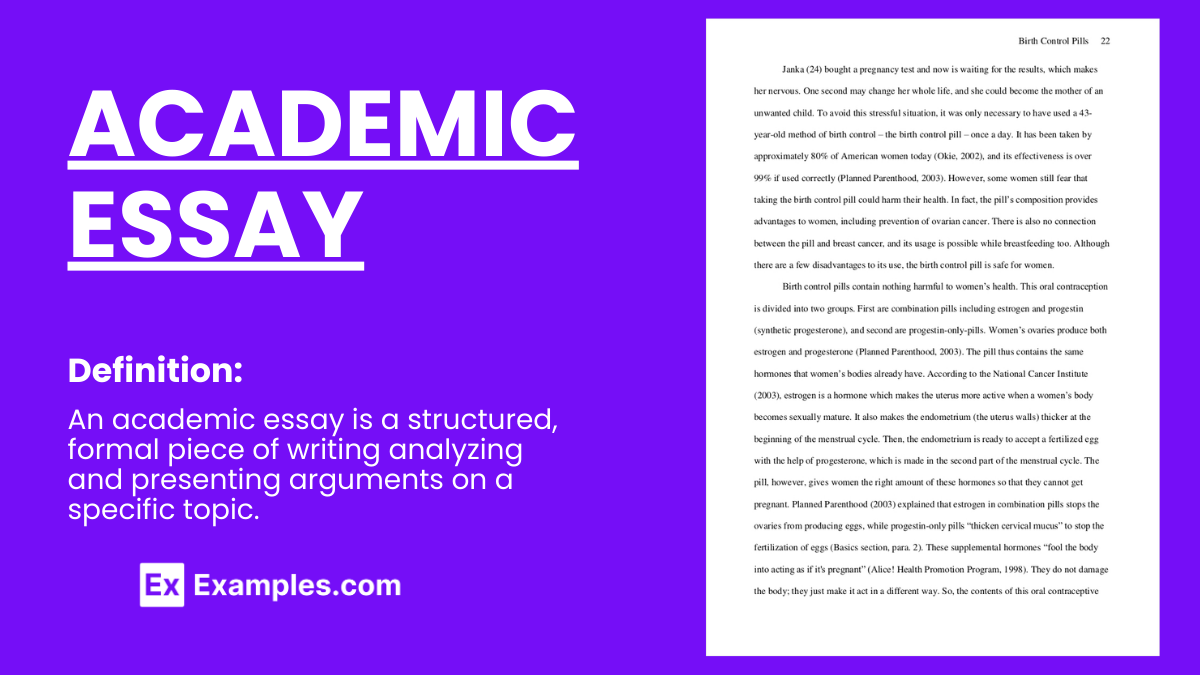
When creating an academic essay , it is very important for you to relay a sensible and clear argument to your target readers. Since academic essays are widely used in the field of education and research, you need to ensure that you do both logical, interesting and informative writing . The items that are commonly seen in an academic essay contain insights, actual occurrences, ideas, and facts.
What is Academic Essay?
An academic essay is a structured form of writing that serves the purpose of presenting and supporting a thesis or argument on a specific topic. It is commonly used in educational settings to assess students’ understanding, analytical skills, and ability to research and convey their findings. An academic essay typically follows a clear format, including an introduction with a thesis statement, body paragraphs that provide evidence and analysis to support the thesis, and a conclusion that summarizes the main points and reinforces the essay’s central argument. This type of essay requires critical thinking and a formal tone, with evidence cited from reputable sources to back up claims made within the text.
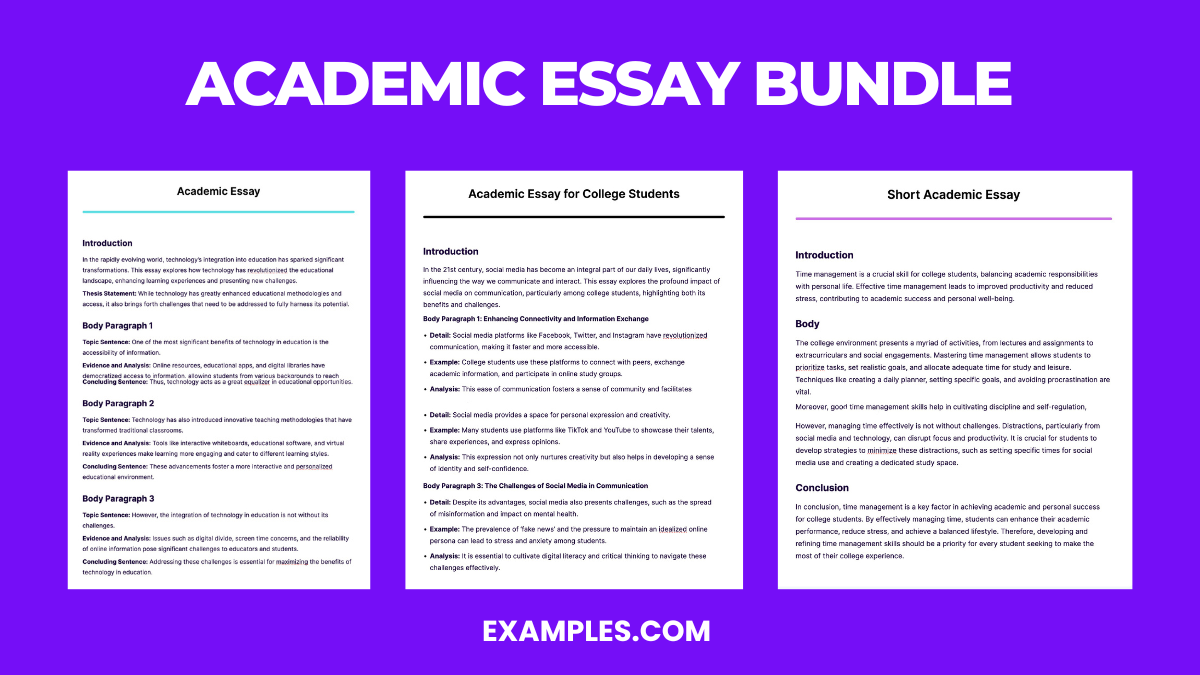
Download Academic Essay Bundle
A lot of students tend to think that an academic essay, just like any other college essay , is something that is too technical or defined. However, you can always write one depending on how you perceive a specific topic of discussion or how you interpret an instance or any other subjects. The samples that we have for you can be a great help if you would like to start writing your academic essay already.
Academic Essay Writing Format/ Outline
1. title page (if required).
Includes the essay’s title, the author’s name, and institutional affiliation.
2. Introduction
Hook : Opens with a statement to grab the reader’s interest. Background Information : Provides context for the topic being discussed. Thesis Statement : Presents the main argument or claim of the essay.
3. Body Paragraphs
Each paragraph should focus on a single idea that supports the thesis, structured as follows:
Topic Sentence : Introduces the main idea of the paragraph. Evidence and Analysis : Includes data, quotes, or examples to support the topic sentence, followed by an explanation of how this evidence supports the thesis. Transition : Connects to the next paragraph or idea.
4. Conclusion
Summary of Main Points : Restates the key arguments or findings presented in the body paragraphs. Restatement of Thesis : Reinforces the essay’s main argument in light of the evidence presented. Closing Thought : Offers a final insight, a call to action, or a suggestion for further research.
Example of Academic Essay Writing
The Impact of Social Media on Communication In the digital age, social media has revolutionized the way we communicate, transcending physical boundaries and transforming social interactions. This essay explores the profound impact of social media on communication, examining both its positive advancements and negative implications. While social media platforms like Facebook, Twitter, and Instagram have enhanced our ability to connect with others, they have also led to a decline in face-to-face interactions and a dilution of personal communication skills. Social media has made it easier than ever to stay connected with friends and family, regardless of geographical distance. A study by Smith and Duggan (2016) found that 75% of internet users utilize social media to maintain relationships with distant family and friends. This widespread use of social media for keeping in touch demonstrates its role as a vital communication tool, bridging the gap between people worldwide. However, the reliance on social media for communication has led to a decrease in the quality of interpersonal interactions. Research by Johnson (2018) indicates a 40% decline in face-to-face conversations among young adults, correlating with increased social media usage. The preference for digital communication over personal interaction suggests a shift in social dynamics, potentially harming relational depth and emotional connections. Moreover, social media has affected our communication skills, particularly among younger generations. A survey by Lee (2019) revealed that 60% of teachers believe social media use has adversely affected students’ writing and verbal communication skills. The informal language and abbreviations common in social media posts and messages are infiltrating academic and professional communications, underscoring the need for a balanced approach to digital interactions. Social media has undeniably transformed communication, offering unparalleled connectivity but also presenting significant challenges. While it fosters global connections, its overuse can undermine personal interactions and communication skills. Balancing social media use with face-to-face communication is crucial for maintaining meaningful relationships and effective communication in the 21st century.
What is an example of academic writing?
Title: The Impact of Climate Change on Biodiversity
Introduction: Climate change, driven primarily by human activities such as the burning of fossil fuels and deforestation, has emerged as a critical global concern. This essay aims to explore the multifaceted impacts of climate change on biodiversity. The effects of rising temperatures, altered weather patterns, and habitat destruction are increasingly evident, with far-reaching consequences for ecosystems and species worldwide.
Body Paragraph: One of the most noticeable consequences of climate change is the shifting geographical ranges of numerous species. Warmer temperatures prompt species to migrate to higher altitudes or latitudes, as they seek habitats that align with their thermal preferences. This phenomenon is evident in various ecosystems, including mountain regions, where alpine plants and animals have progressively moved uphill. These migrations, while adaptive, can disrupt established predator-prey relationships and competition for resources. Such shifts can also lead to reduced biodiversity in lower-altitude regions as some species fail to adapt or relocate successfully.
- Smith, J., & Johnson, A. (2019). Impacts of Climate Change on Alpine Plant Communities. Environmental Studies Journal , 42(3), 256-270.
- Wilson, P., & Davis, R. (2020). Climate-Induced Shifts in Animal Distributions: Evidence from a Decadal Study. Ecology and Evolution , 10(12), 5963-5972.
Conclusion:
In conclusion, climate change exerts profound effects on biodiversity, manifesting through shifts in species distributions, altered ecological relationships, and habitat loss. As global temperatures continue to rise, addressing these impacts becomes increasingly urgent. Conservation efforts, sustainable practices, and international cooperation are essential in mitigating the repercussions of climate change on the world’s diverse ecosystems and species.

Academic Essay Topics with Samples to Edit & Download
- Pollution due to urbanization
- The environmental causes of smoking
- The outcomes of global warming
- Abortion as a controversy
- Causes of obesity in teenagers
- Childhood memories
- Fathers should get equal paternity leave
- Harmful dogs should be euthanized
- How does divorce affects children?
- How does technology affect productivity?
- Importance of preserving threatened species
- Parenting styles and motives
- Political issues in the U.S.
- Romantic relationships
- Should schools abolish homework?
- Violent video games should be banned
- Ways of protecting the environment
Academic Essay Writing Examples & Templates
1. academic essay example.
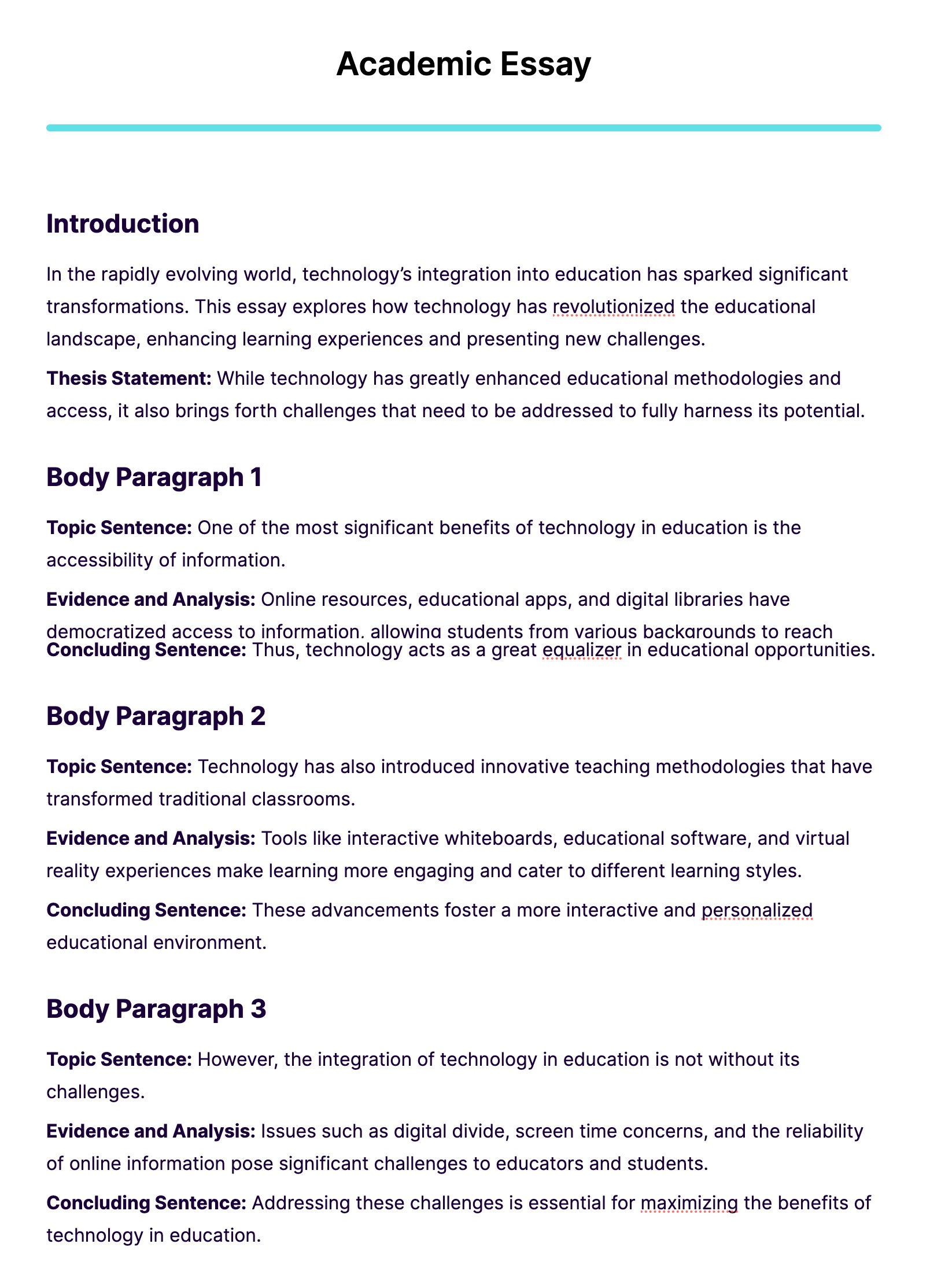
Free Download in PDF
2. Academic Essay for College Students
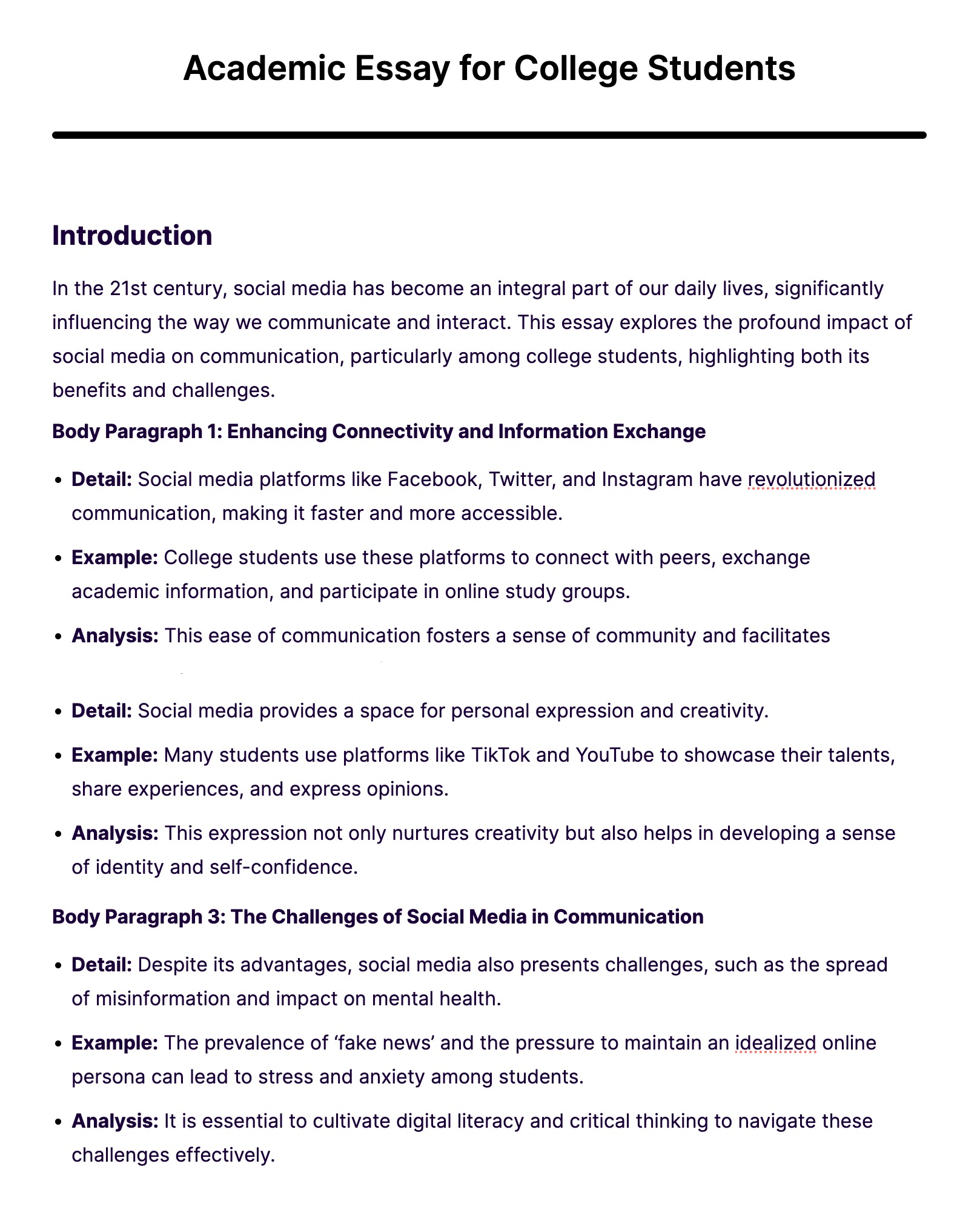
Edit & Download
3. Short Academic Essay
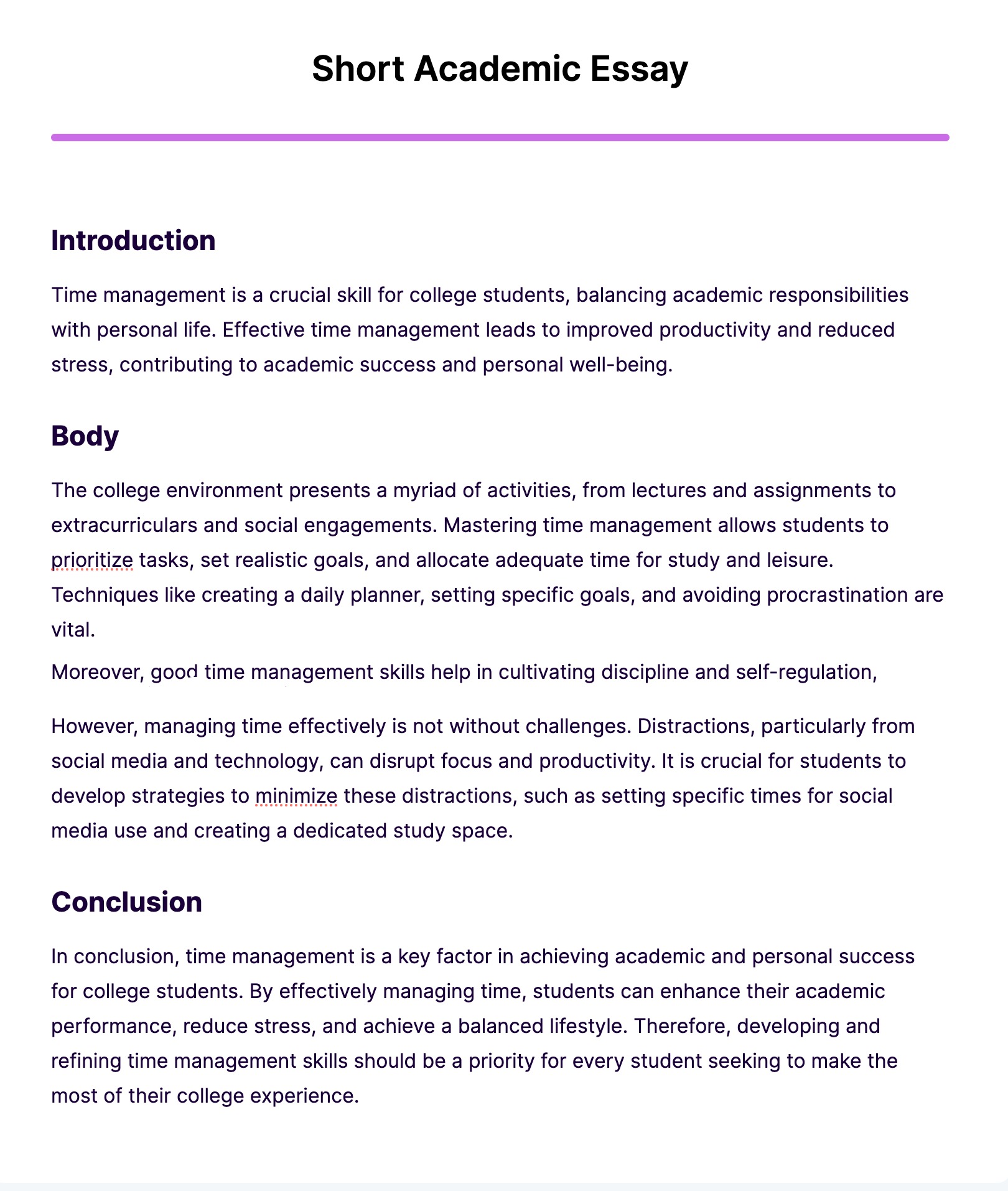
4. Academic Essay Template
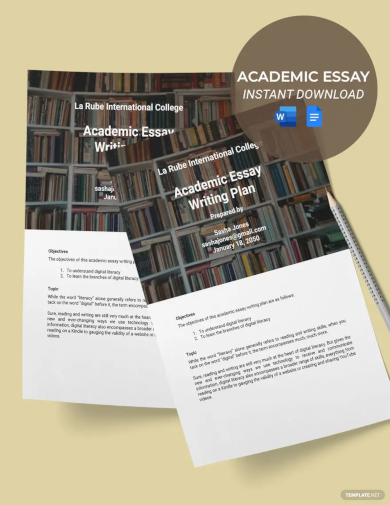
5. Academic Writing Essay Template
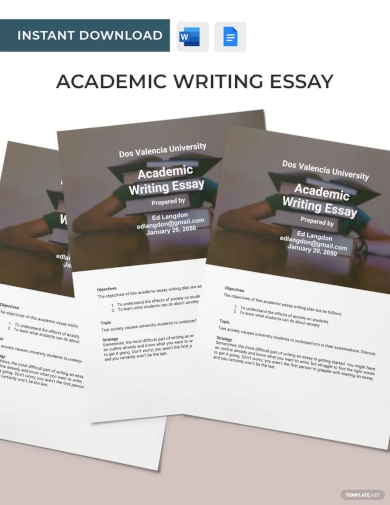
6. Academic Text Example Essay Template
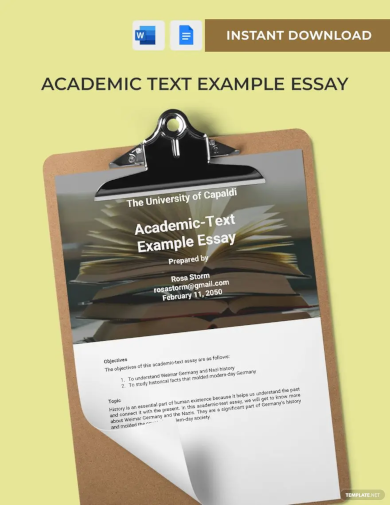
7. Academic Essay Writing Examples
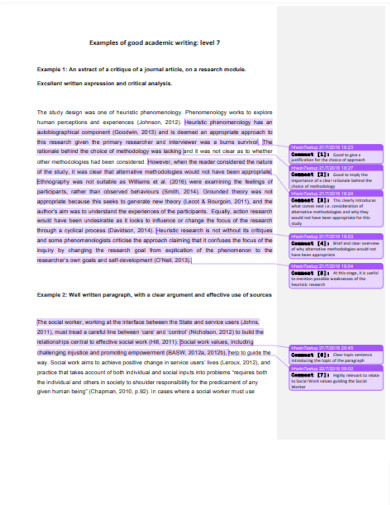
academic-skills.health.herts.ac.uk
8. Academic Essay for College Students Examples

9. Narrative Academic Essay Examples
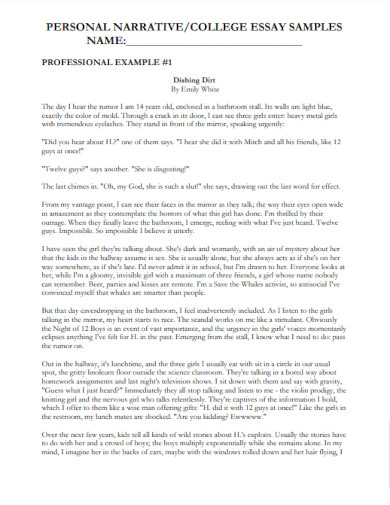
learning.hccs.edu
10. Sample Academic Essay Format Example

owll.massey.ac.nz
11. Academic Paper Essay Example
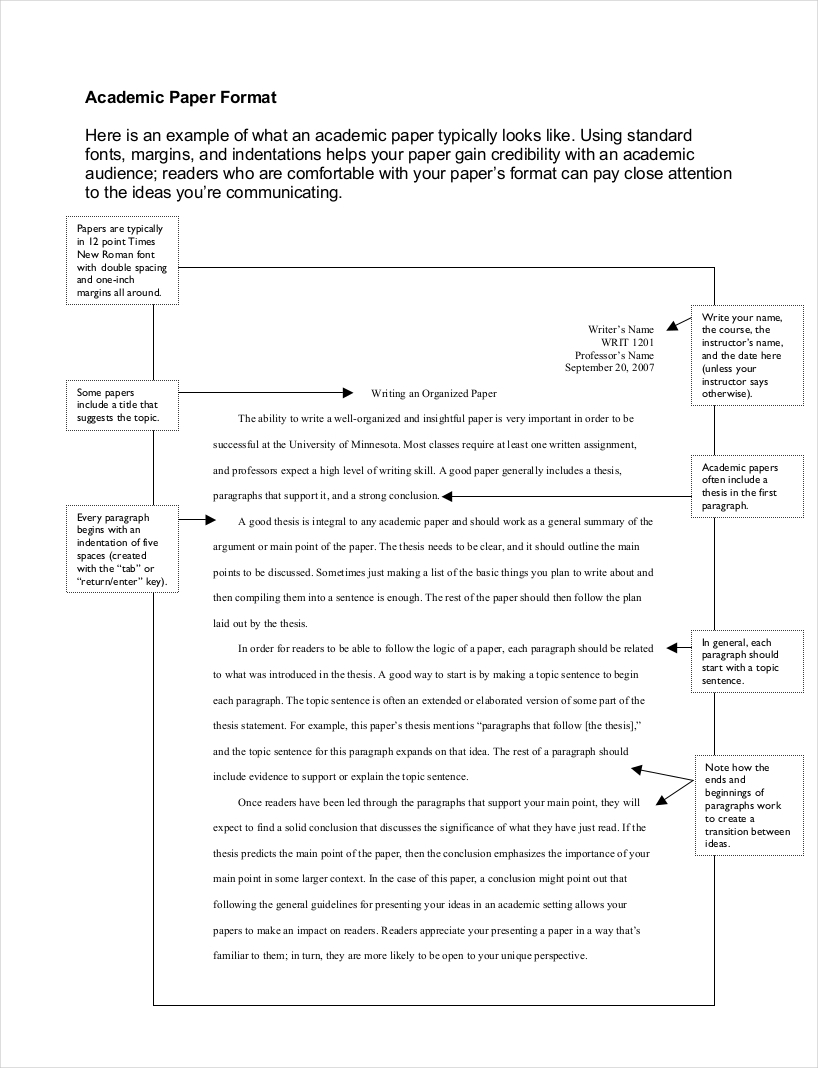
writing.umn.edu
12. Simple Academic Essay Example
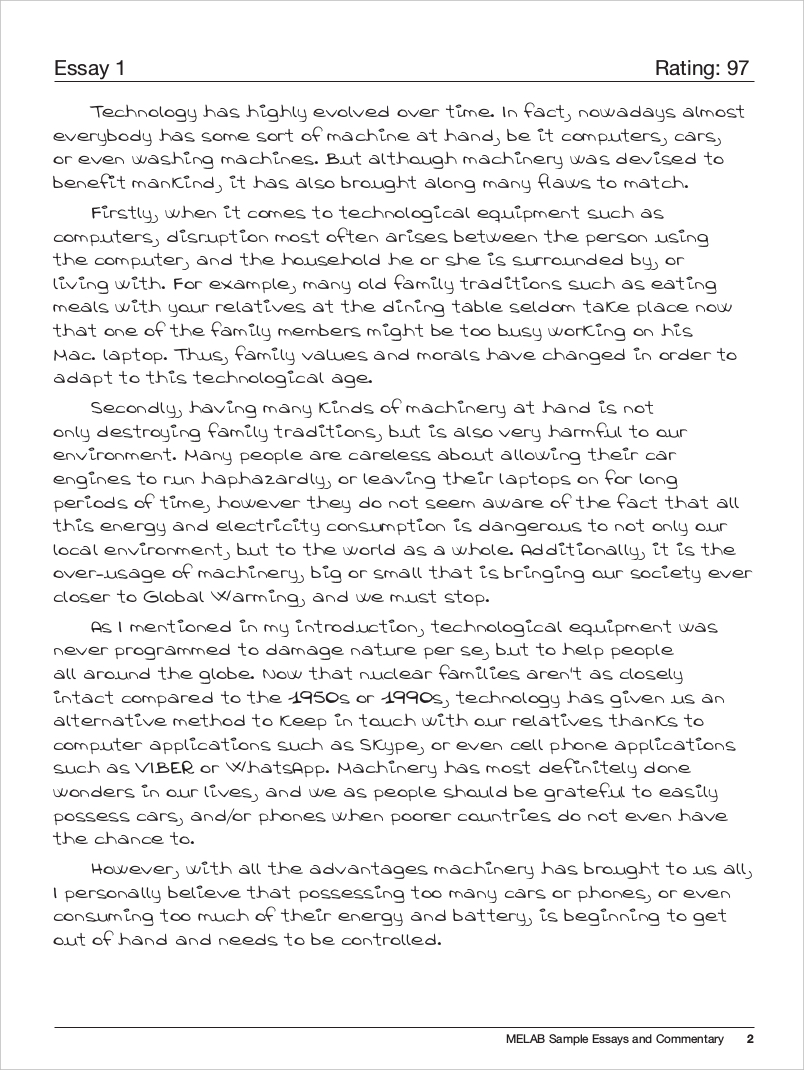
cambridgemichigan.org
13. Academic Essay Sample Structure Example
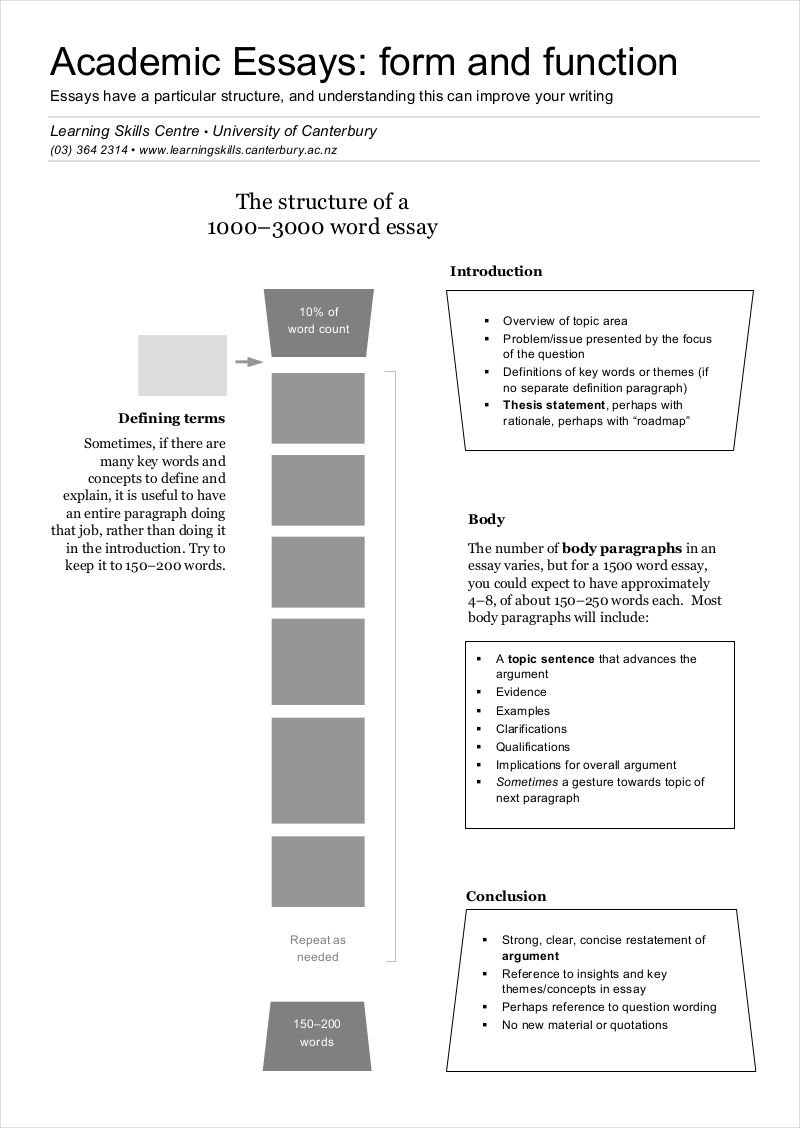
lps.canterbury.ac.nz
14. Short Academic Essay Example in PDF
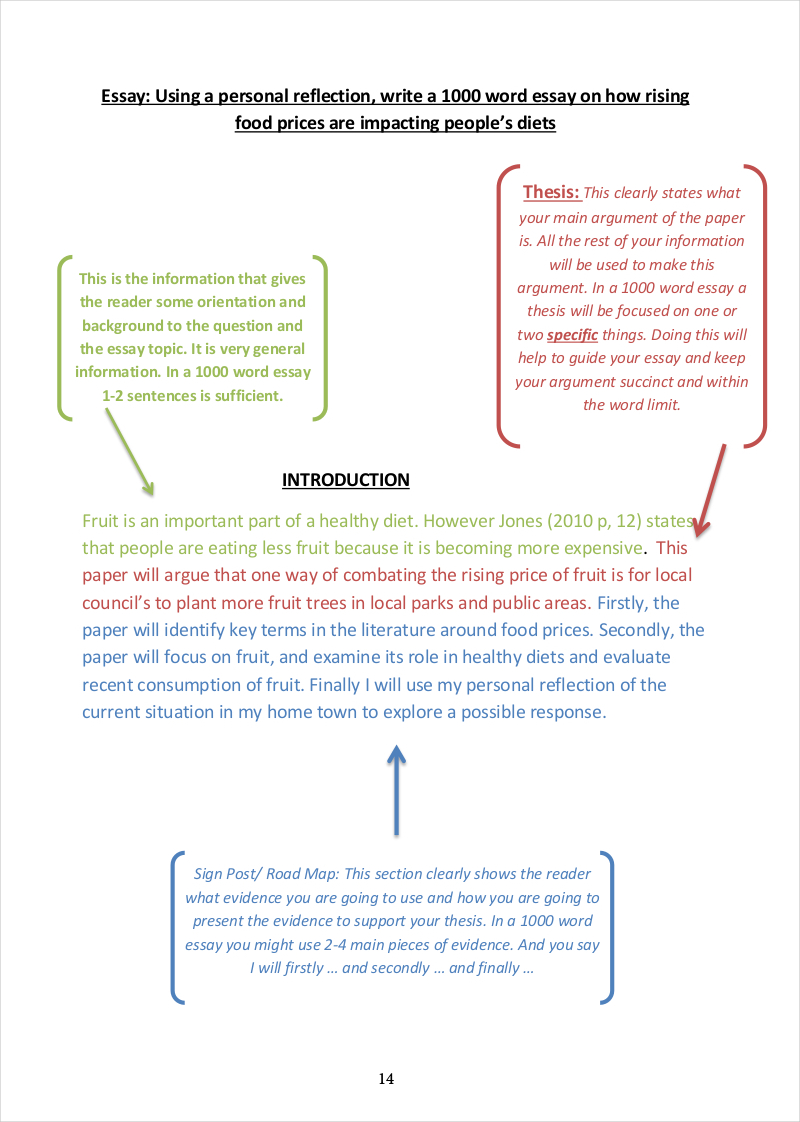
15. Free Printable Academic Essay Sample
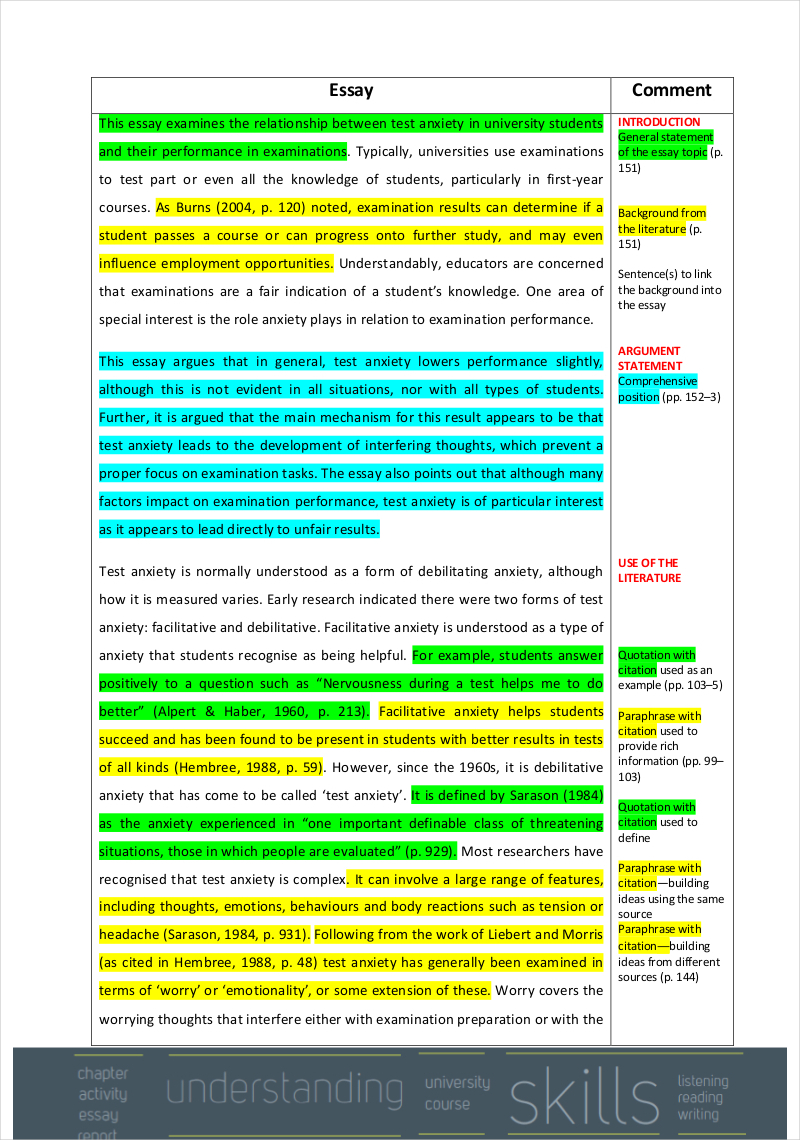
lib.oup.com.au
16. Sample Academic Essay Example
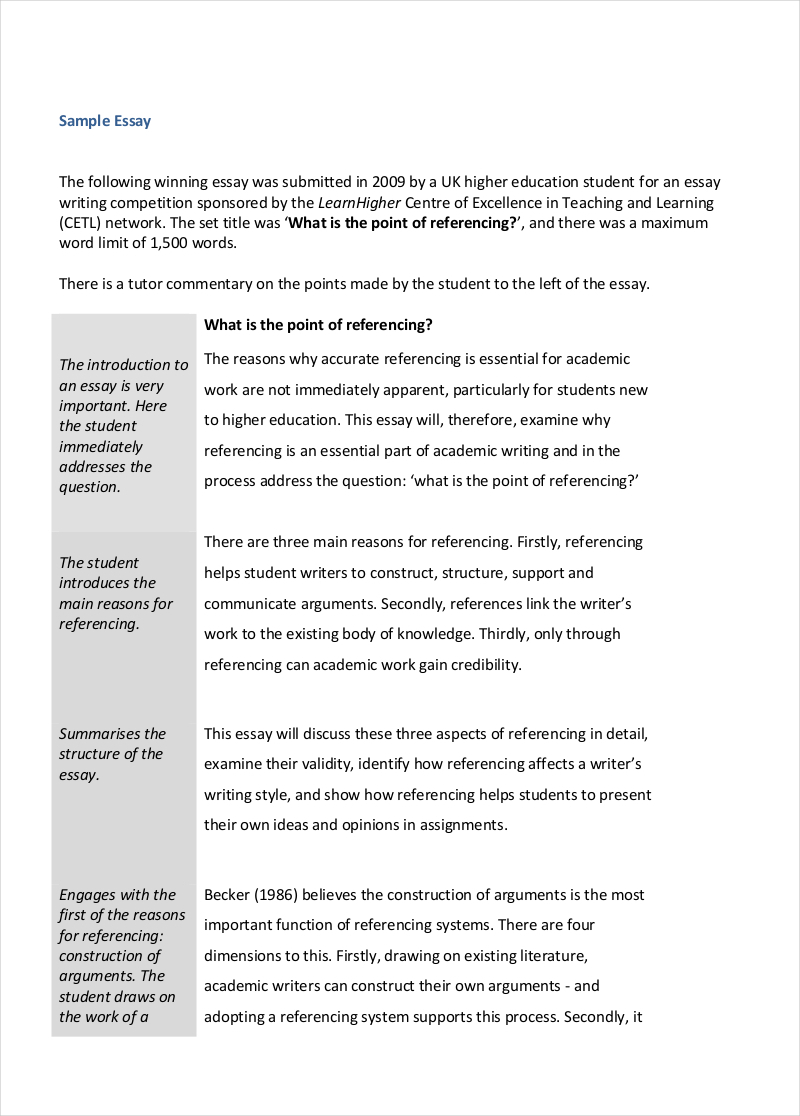
17. Academic Essay Writing Sample Example
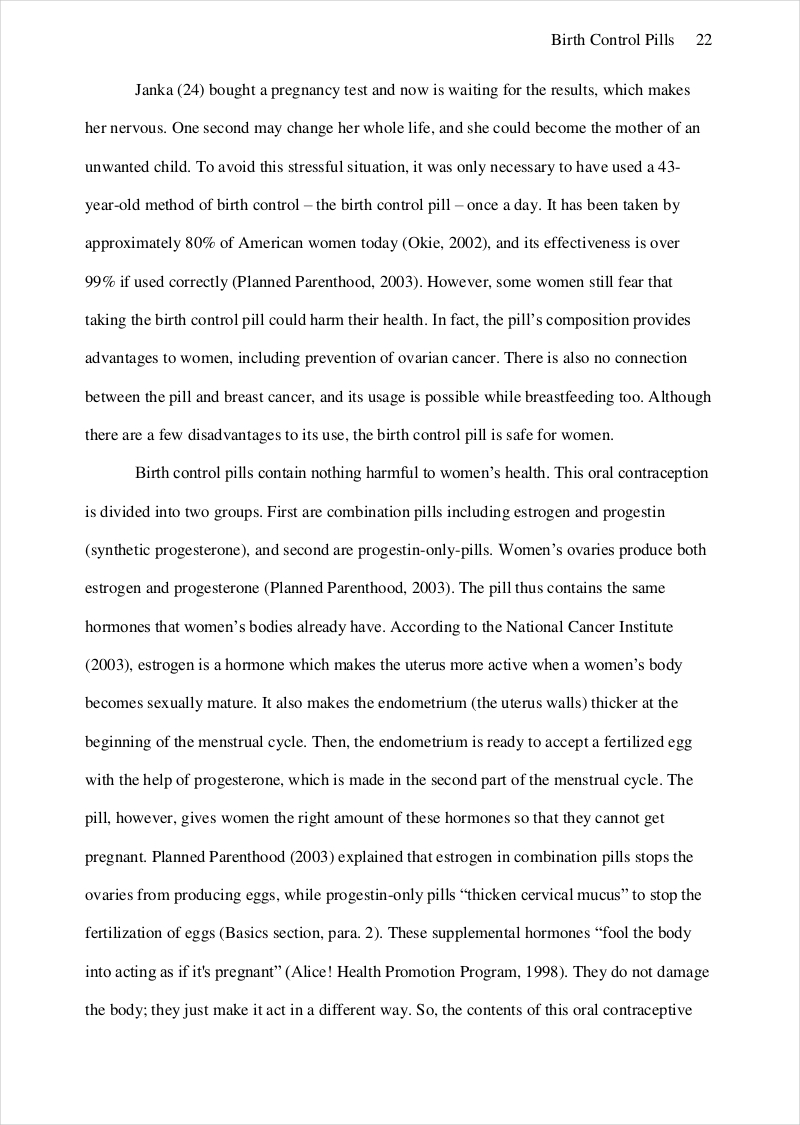
18. Free Academic Essay Sample Guide

intranet.ecu.edu.au
19. Sample Academic Essay Outline
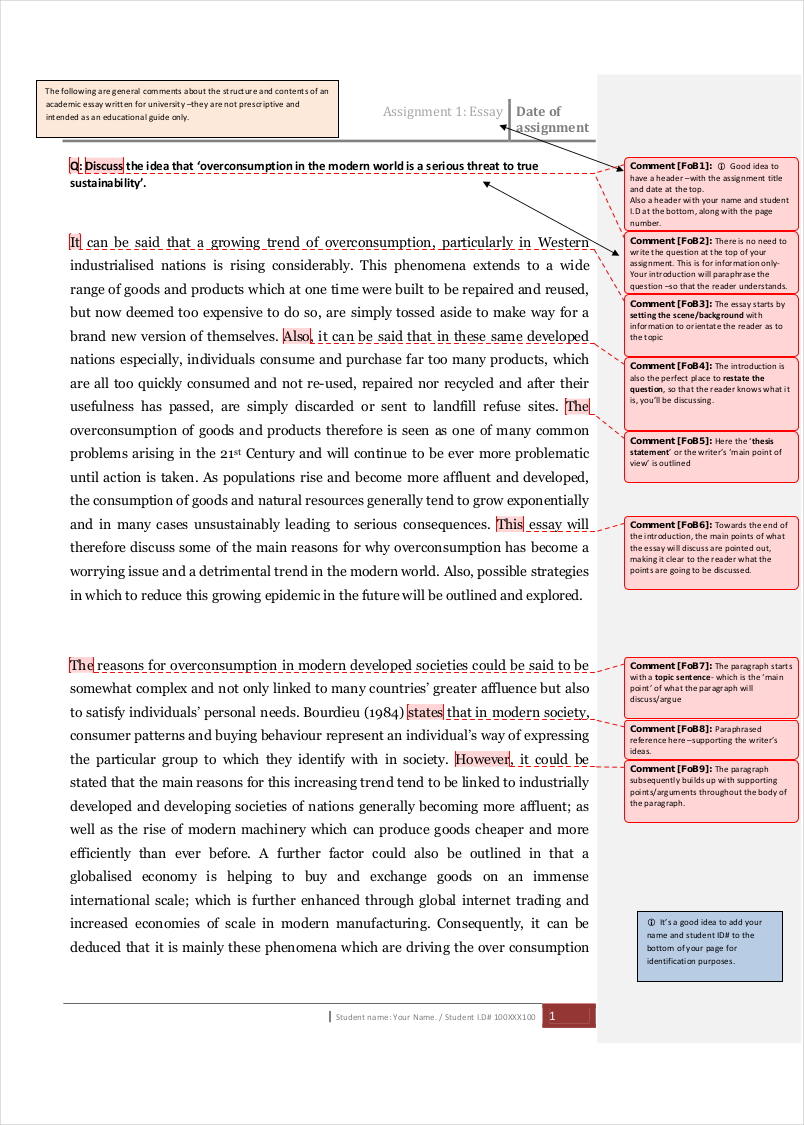
lib.uts.edu.au
Are You Ready and Prepared to Create an Academic Essay?
Different types of academic writing require an individual to have a clear thought process within the entirety of idea development. You have to be focused on what you would like to achieve your final written output so you can incorporate successful guides and processes within the activity. Some of the things that you can talk about in an academic essay include the following:
- Human behavior, characteristics, and emotions
- Community relations
- Natural occurrences
- Language and its effective usages
- Culture and the arts
- Academic researchers
- Relevant cultural phenomenon
- Photography and other artistic undertakings
- Human interactions
- Other subjects that are related to education and academics
Knowing the subject of your article is only one of the initial things that can help you prepare during the writing process. Here are some ways on how you can be ready to write your academic essay:
- You need to have an order of writing that can easily showcase the flow of your thoughts. You must ensure that you can easily connect with your readers or audience so they can respond to the content of your article. Your academic essay should evoke an emotion that is necessary to spark other ideas, opinions and other kinds of responses.
- You need to be aware that academic essays differ depending on the educational or academic discipline where they will be used. There are certain ways that are necessary to be followed in various fields for an academic essay to be deemed effective. With this, always be mindful of the directions or instructions were given to you by the entity who requires you to write an academic essay.
- You do not need to pattern your writing to the works of others. You can be ready even by just knowing your subject and researching about it. The style of writing that you have can give the most difference to how you write and how you present your work. Always keep in mind that your academic essay should be playful – it must not bore your audience.
- You must think of your academic essay as an enterprise by using scholastic writing approaches. The conversation that you can create with your readers must be relevant to what is happening nowadays or for the study that specific student groups need. Being able to give focus on the relativity of your written work can make it easier for readers to understand why your academic essay is important within the academic field.
- You should ensure that your thesis statement is precise, concise, and strong. When you are in the process of developing your academic essay’s thesis, you need to make sure that you are not just basing your write-up on unreliable information. Always refer to evidence, facts, and real data as it can help you strengthen your claims. More so, do not forget to reference your essays when necessary.
Things to Remember When Identifying the Purpose of Your Academic Essay
An academic essay always has to be relevant. It needs to be beneficial to a specific group or to the majority of the academic community. The motive of your essay is very important to be considered as it can identify whether you can be of help to the people who need a particular educational reference. Here are a few things that you need to remember when identifying the purpose of your own academic essay:
- Do not create an academic essay just for the sake of passing it. Your academic essay is more than an assignment or a project. There are some last minute essay writing activities that are done in various fields especially if students think that an academic essay is just a part of their requirements. However, what these students do not know is that an academic essay is a representation of themselves. It showcases the thoughts of the students, what they have learned may it be in class or through self-discovery, and how they are impacted by certain issues and subjects of discussion. This is where the value of a Free Essay and an Informative Essay becomes evident, as both types of essays encourage students to express their understanding and insights on a given topic freely and informatively.
- Be precise with the purpose of your writing. An academic letter is not just a document that can showcase your mastery when it comes to a particular academic subject. It can talk about a specific subject or it can also be a general paper that can provide a lot of information about your experiences and/or insights. This is where the importance of a Self-Introduction Essay comes into play, allowing you to present a personal narrative that reflects your academic journey and achievements. Similarly, an Expository Essay helps in laying out facts and an unbiased analysis of a topic, further enriching the academic discourse. If you will have a precise purpose when writing an academic essay, there is no doubt that your essay will not be pointless.
- Always think of the best case that can help you represent your thoughts. Your style of writing, as well as the entire document’s format and content, can help you realize your ideas. This includes the succinctness and clarity often found in a Short Essay , where the challenge is to convey your thoughts within a limited word count effectively. Similarly, a Scholarship Essay requires you to articulate your achievements and aspirations in a way that resonates with scholarship committees, demonstrating your potential and need for financial support. With this, your point of writing can easily be identified by readers. Being able to present your purpose the best way possible can add up to the success of your academic paper.
Developing an Academic Essay
For you to be able to persuade your readers with the content of your academic essay, there is a need for you to present a structure that can easily identify your claims, arguments, observations, and/or factual presentations. Integrating a Student Essay can demonstrate the personal perspective or learning journey of an individual, making your arguments more relatable. Similarly, incorporating a Travel Essay could enrich your essay by providing unique insights and observations from different cultures or environments. Being clear about how you present your idea is essential for people to see the context of your academic essay.
If you have an organized manner of putting together the concepts of your academic essay, then validating your thesis statement can be more evident. To avoid common essay mistakes and other negative factors that can affect your desired output, here is a basic guide on how you can develop your own academic essay:
- Start by creating a strong thesis statement. Identify your stand and make sure to strictly present evidence that can help you claim its authenticity and validity. Reveal evidence after your thesis statement presentation. Your thesis statement serves as your introduction speech . It lets your readers know the topic of your academic essay and what they can expect from the entire article.
- Establish the context of your essay after your thesis statement. The way that you approach your topic can let readers know whether it is the specific approach that they also need for their undertakings. There are different contexts that can be used within the same subject, so you have to make sure that you will be clear when it comes to identifying the part of the topic that you are going to talk about. This clarity can be achieved through a Descriptive Essay , where vivid descriptions and details about the topic can enlighten and engage the reader. Additionally, understanding the Parts of an Essay is crucial in structuring your thoughts and arguments effectively. Limiting your topic discussion can help you give more focus to what is important for your discussion, ensuring that each part contributes meaningfully to the whole.
- Create the next paragraphs based on the data that can support your thesis statement. The body of your academic essay can be based on your observations, reviews, statements and research outputs. You can present these items separately through the usage of various paragraphs. However, there are instances where it will be better if you can combine or compare to evidence to make your statements more effective.
- Conclude. Your conclusion is as important as your introduction. If you believe that you have created a strong introduction, you have to maintain that until the end of your academic essay. Sum up all the information that you have presented so that people can identify whether your conclusion has lived up to the content of what you have written. Your conclusion can also be used to assess whether your thesis statement has been carried within the entirety of your discussion.
Importance of a Well-Defined Thesis Statement in an Academic Essay
A thesis statement is a paragraph or a set of paragraphs that identifies your stand about your subject. There is a need for this statement to be created as it can affect the entirety of your academic paper. Here are some of the reasons why it is important to develop an effective thesis statement before and while writing your academic paper:
- Your thesis statement is a reflection of your actual idea. This helps you present the point that you would like to make and the message that you actually want to disseminate to your readers. Through a thesis statement, you can organize the evidence that are relevant to your claims based on their relevance to the topic and how you view it as a writer.
- Your thesis statement can guide you within the entirety of your writing processes. Just because you have already done an initial thesis statement does not mean that you are going to fully stick with it until the end of your writing. There are instances where thesis statements are developed or even changes during the creation of an academic essay depending on how the research about the topic has evolved.
- Your thesis statement can allow you to establish originality. Since your academic essay can be based on your research findings and observations, your thesis statement can be your platform to specify what you have come up with. Through a well-defined thesis statement, you can set your output apart from other essay examples that have been written by professionals and other entities in the field of academics.
- Your thesis statement is one of the items that the audience will look at when referencing for credibility and validity. Academic essays need to have a strong initial impact on readers. This statement can help them be focused on a particular standpoint which can enlighten them about your views and opinions, and how these are essential to be considered.
- Your thesis statement can help your readers immerse in your academic essay. The material that you will be coming up with can be reviewed by different people. Depending on the field of education where you are currently in, you need to make sure that your readers can see patterns of evidence presented so they can clearly see how you were able to generate and come up with insights. You have to ensure that the thesis statement that you have created contains the most promising thought so you can get the trust or even the acceptance of your readers about your academic essay’s subject.
Guidelines in Writing an Academic Essay
The course materials that you need to talk about within an academic essay can reflect your level of understanding about the subject. Simply put, an academic essay can be an evidence of the depth of your research procedures and all the other activities that you have executed so that you can support the content of your written output. Listed below are some of the guidelines that can be useful to your academic essay writing processes.
- Always analyze your essay prompt or the question that you need to answer or explain. You have to know whether you are tasked to argue, analyze, or discuss the topic. There will be times where you also need to compare the items present in your subject or explain the underlying factors that can affect your topic.
- Make sure that you will research about what you will write about . Your academic essay can only be fully-maximized if you can present facts. Primary research may be a helpful bit a more precise review of your research topic can help you gather more information that can be helpful in the development of your content. Always assess your sources of information so you can ensure that they are credible.
- Create a draft so that you will have a guide when writing your academic essay. If you will be organized when writing your academic essay, you can create an output that is well-curated and comprehensive. With this, your academic essay can provide more impact to your readers. This can also help you gather your thoughts first and identify how you can put them all together in the most cohesive and efficient way possible.
If you still do not feel confident in writing your own academic essay from scratch, then you can refer to templates and samples which you can download online. Doing this will allow you to be more familiar with the common content and basic formats that are usually seen in an academic essay. When using a template as a guide, always make sure that it is applicable to the study that you are practicing or the academic field or discipline where you will use your academic essay.
As a student, there will always be an instance where we will be required to write an academic essay. If you want to create an academic essay that is both outstanding and relevant, always put the items that we have discussed above in mind.
Setting the Stage for Essay Writing Success
- Understand the Assignment: Carefully read and comprehend the essay prompt or assignment to grasp its requirements and objectives.
- Topic Selection: Choose a relevant and interesting topic that aligns with the assignment.
- Research: Gather credible sources and information related to your topic. Take thorough notes and document your sources.
- Thesis Statement: Develop a strong, clear, and concise thesis statement that presents the main argument of your essay.
- Outline: Create an outline that organizes your essay into sections, including the introduction, body paragraphs, and conclusion. Each section should have a clear purpose.
- Writing Draft: Begin writing your essay, keeping the introduction engaging, and ensuring each body paragraph addresses a single point or idea supported by evidence.
- Citations: Properly cite sources as you write, following a recognized citation style (e.g., APA, MLA).
- Edit and Revise: Review and revise your draft, focusing on grammar, clarity, coherence, and organization.
- Proofread: Carefully proofread your essay for errors in spelling, punctuation, and sentence structure.
- Final Review: Double-check that your essay fulfills the assignment requirements, including formatting, citations, and references.
How do you write an academic essay?
- Understand the Assignment: Read the essay prompt or assignment thoroughly to grasp its requirements and objectives.
- Research: Gather relevant sources and information from books, articles, and credible online sources.
- Plan and Outline: Create an outline with an introduction, body paragraphs, and a conclusion. Each section should have a clear purpose.
- Thesis Statement: Develop a strong thesis statement that presents the main argument of your essay.
- Introduction: Start with a compelling hook, provide background information, and present your thesis statement.
- Body Paragraphs: Each paragraph should focus on a single point or idea, supported by evidence or examples. Use topic sentences to introduce the main idea of each paragraph.
- Citations: Cite sources properly using a recognized citation style (e.g., APA, MLA, Chicago).
- Analysis and Critical Thinking: Analyze and evaluate the evidence or arguments presented, and make connections between them.
- Transition Sentences: Use transition words and phrases to connect ideas between paragraphs.
- Conclusion: Summarize the main points, restate the thesis, and provide a thoughtful conclusion that leaves a lasting impression.
Academic Essay Characteristics
Academic essays are distinguished by several key characteristics that set them apart from other types of writing. These features ensure that essays meet the rigorous standards of academic discourse and contribute effectively to scholarly conversations. Here are the primary characteristics of academic essays:
- Clear Purpose : An academic essay is written with a clear purpose, often to argue a point, present an analysis, or discuss a research finding. The purpose guides the structure and content of the essay.
- Structured Format : It follows a structured format with an introduction, body paragraphs, and a conclusion. This organization helps present arguments and evidence in a coherent and logical manner.
- Thesis Statement : A distinctive feature is the thesis statement, a concise summary of the main argument or claim, usually found at the end of the introduction. It sets the direction for the entire essay.
- Critical Analysis : Academic essays involve critical analysis of ideas, texts, or situations. Writers assess evidence, debate viewpoints, and use logic to develop their arguments.
- Evidence-Based Arguments : Claims made in academic essays are supported by evidence from credible sources. This includes data, statistics, research findings, and quotations from experts.
- Formal Tone and Style : The writing adopts a formal tone and style, avoiding colloquial language, personal anecdotes (unless relevant), and slang. It maintains an objective and professional voice.
Types of Academic Writing
Academic writing encompasses a variety of types, each serving a specific purpose and adhering to a particular format. Here are some of the main types of academic writing:
- Descriptive Writing : This type focuses on describing a character, event, or situation in detail. It’s often used in reports or descriptive essays, where the goal is to provide a clear picture of the subject to the reader.
- Analytical Writing : Analytical writing breaks down complex information into smaller components for better understanding. It involves comparing and contrasting, classifying, and analyzing causes and effects. This type is common in research papers and literature reviews.
- Persuasive Writing : Persuasive writing aims to convince the reader of the writer’s viewpoint or argument. It is characterized by a strong thesis statement, clear evidence, and logical reasoning to persuade the reader. Opinion pieces, argumentative essays, and proposals often employ persuasive writing.
- Expository Writing : Expository writing is used to explain or inform the reader about a specific topic in a clear, concise, and logical manner. It focuses on presenting facts, statistics, and examples without the writer’s personal opinions. This type includes most essays, many types of reports, and certain types of research papers.
- Reflective Writing : This type involves the writer reflecting on their personal experiences, thoughts, or feelings regarding a particular subject or experience. Reflective writing is subjective and is often used in journals, blogs, and reflection essays in educational settings.
- Critical Writing : Critical writing evaluates and critiques the work of others, such as books, articles, or artworks. It involves assessing the strengths and weaknesses of arguments, evidence, and methodologies. Literature reviews, critique essays, and certain types of research papers often require critical writing.
- Narrative Writing : Although less common in strict academic settings, narrative writing is used in certain disciplines to tell stories or describe events chronologically. Personal statements and some types of qualitative research may employ narrative writing to convey experiences and observations.
- Report Writing : Reports convey information from a writer to a reader, focusing on facts and evidence. They are structured and include sections like an introduction, methodology, findings, and conclusions. Lab reports, business reports, and technical reports are examples of this type.
Academic Writing Principles
Academic writing is governed by a set of core principles designed to ensure clarity, precision, and rigor in scholarly communication. Understanding and adhering to these principles is essential for effective academic writing. Here are the key principles:
- Clarity : Writing should be clear and understandable, avoiding unnecessary jargon and complexity to ensure that the reader can easily follow the argument or narrative.
- Coherence : The text should be logically organized, with a clear structure that guides the reader through the argument or discussion. Each part of the writing should connect to the others in a meaningful way.
- Conciseness : Academic writing should be concise, conveying ideas in as few words as necessary. This does not mean oversimplifying, but rather avoiding redundancy and verbosity.
- Objectivity : Writers should strive for objectivity, presenting information and arguments based on evidence rather than personal opinions or biases. This includes acknowledging counterarguments and limitations.
- Precision : Precision involves using the exact words to convey your meaning and being specific about your claims, evidence, and references. This also means accurately citing sources and providing specific data when necessary.
- Evidence-Based Argumentation : Arguments should be supported with appropriate evidence, such as data, examples, and citations from authoritative sources. This principle underscores the importance of research and verification in academic writing.
- Formality : The tone of academic writing is formal, which means avoiding colloquial language, contractions, slang, and humor. Formality also involves using the passive voice where appropriate and avoiding personal pronouns when making general arguments.
- Citation and Referencing : Proper citation and referencing of sources are fundamental to academic writing. This practice not only gives credit to original authors but also allows readers to verify sources and understand the basis of the evidence presented.
- Originality and Plagiarism Avoidance : Academic writing must be original and free from plagiarism. This means that writers should produce their own work based on their research and ideas and appropriately cite any sources they use.
- Critical Thinking : Effective academic writing reflects critical thinking, challenging assumptions, evaluating evidence, and synthesizing ideas from various sources to offer new insights or perspectives on a topic.
How do you start an academic essay sample?
Begin an academic essay sample with a captivating hook, provide context on the topic, and conclude the introduction with a clear and concise thesis statement that outlines your main argument.
What is the opening line of an academic essay?
The opening line of an academic essay should engage the reader’s interest, introduce the topic, and provide a sense of the essay’s focus and importance.
What not to write in an academic essay?
In an academic essay, avoid personal opinions, emotional language, unsubstantiated claims, informal language, and plagiarism. Focus on evidence-based arguments and adhere to academic standards and conventions.
How do you write an academic essay quickly?
To write an academic essay quickly, start with a clear thesis, outline main points, research efficiently, focus on key evidence, and minimize editing while maintaining proper citations and structure.
Text prompt
- Instructive
- Professional
Write an academic essay on the impact of technology in education
Explain in an academic essay how climate change affects global agriculture
The Structure and Cultural Significance of the Teepee
This essay about the cultural significance and architectural ingenuity of the Indigenous teepee, particularly among North American Plains tribes. It explores how the teepee’s design, materials, and communal construction reflect Indigenous ethos and adaptation to their environment. The teepee symbolizes more than just a dwelling; it embodies spiritual beliefs, communal collaboration, and resilience. Despite historical changes, including government policies and societal shifts, the teepee remains a potent emblem of Native American heritage, fostering unity, reverence for nature, and cultural connection among Indigenous communities today.
How it works
The Indigenous teepee, an emblematic symbol entrenched in North American Indigenous heritage, stands out as an enduring representation of Indigenous ethos. This iconic conical abode, historically affiliated with Plains tribes, embodies not merely a pragmatic and adaptable dwelling but also embodies cultural opulence and communal ethos. Delving into its architectural configuration, historical trajectory, and cultural import unveils invaluable insights into how Indigenous communities acclimatized to their surroundings and preserved a robust sense of identity.
Fundamentally, the teepee’s architectural blueprint encompasses a framework of elongated timber poles arranged in a conical format and draped with a sturdy covering, traditionally fashioned from buffalo hides.
The poles are strategically aligned to mesh at the zenith, fashioning a stable, weather-resilient edifice. A vent at the apex facilitated airflow from an internal hearth. This design, both rudimentary and inventive, furnished warmth and shelter amidst inclement conditions while facilitating ventilation and natural illumination. The mobility of the teepee rendered it well-suited to the nomadic lifestyle of Plains tribes, who trailed the migratory paths of buffalo herds.
In the summertime, teepees were often sheathed in lighter fabrics to enhance airflow, whereas weightier hides were employed in winter to insulate against the chill. The entrance flap, customarily oriented towards the east, symbolized the dawn and the commencement of each day. Internally, spatial organization frequently mirrored social customs, with designated zones earmarked for various familial members or activities.
The cultural resonance of the teepee transcends its utilitarian functionality. For myriad Plains tribes, it epitomized the celestial order and the interconnection between the terrestrial and the divine. The conical contour represented the hallowed peak, while the aperture atop was perceived as a conduit through which supplications and fumes from sacred conflagrations could ascend to the heavens. Certain tribes even attributed emblematic connotations to the quantity of poles employed, with each pole symbolizing a distinct virtue or principle such as fidelity, esteem, or fortitude.
The erection and preservation of teepees were collaborative endeavors, with divergent responsibilities delegated to men and women in accordance with traditional gender roles. Men typically undertook the crafting of the wooden framework and the procurement of hides, while women engaged in hide processing, stitching, and domestic interior arrangement. This division of labor fortified communal ties and underscored the significance of mutual cooperation within the society.
Across time, the materials utilized to sheath teepees underwent evolution. With burgeoning trade with European settlers, Plains tribes gradually transitioned to canvas and other textiles in lieu of hides. The exterior of teepees frequently bore embellishments in the form of painted motifs, reflective of personal or communal narratives, spiritual convictions, or martial exploits.
The advent of reservations in the late 19th century precipitated seismic shifts in the lifestyle of numerous Native American tribes, including their utilization of teepees. Governmental initiatives aimed at assimilation advocated for the adoption of permanent domiciliary structures over traditional lodgings like teepees. Nevertheless, teepees retained their cultural significance as emblems of legacy, resilience, and communal solidarity. Presently, they persist in ceremonial contexts and festivities.
In contemporary contexts, the teepee has metamorphosed into a broader emblem of Native American cultural patrimony. It continues to evoke sentiments of unity, resilience, and reverence for nature. Countless Native American artisans, intellectuals, and educators leverage the teepee as a conduit to reconnect with their cultural lineage and to edify others regarding the customs and chronicles of Plains tribes.
In summation, the Indigenous teepee serves as a testament to the resourcefulness and adaptability of Plains tribes. Its architectural configuration, conceived for practicality and mobility, facilitated the sustenance of a migratory lifestyle while embodying profound spiritual and communal import. Despite historical vicissitudes and sociocultural transformations, the teepee remains a potent emblem of Native American legacy and ethos, furnishing a glimpse into the opulent traditions and principles that have molded Indigenous cultures across North America.
Cite this page
The Structure and Cultural Significance of the Teepee. (2024, May 12). Retrieved from https://papersowl.com/examples/the-structure-and-cultural-significance-of-the-teepee/
"The Structure and Cultural Significance of the Teepee." PapersOwl.com , 12 May 2024, https://papersowl.com/examples/the-structure-and-cultural-significance-of-the-teepee/
PapersOwl.com. (2024). The Structure and Cultural Significance of the Teepee . [Online]. Available at: https://papersowl.com/examples/the-structure-and-cultural-significance-of-the-teepee/ [Accessed: 17 May. 2024]
"The Structure and Cultural Significance of the Teepee." PapersOwl.com, May 12, 2024. Accessed May 17, 2024. https://papersowl.com/examples/the-structure-and-cultural-significance-of-the-teepee/
"The Structure and Cultural Significance of the Teepee," PapersOwl.com , 12-May-2024. [Online]. Available: https://papersowl.com/examples/the-structure-and-cultural-significance-of-the-teepee/. [Accessed: 17-May-2024]
PapersOwl.com. (2024). The Structure and Cultural Significance of the Teepee . [Online]. Available at: https://papersowl.com/examples/the-structure-and-cultural-significance-of-the-teepee/ [Accessed: 17-May-2024]
Don't let plagiarism ruin your grade
Hire a writer to get a unique paper crafted to your needs.

Our writers will help you fix any mistakes and get an A+!
Please check your inbox.
You can order an original essay written according to your instructions.
Trusted by over 1 million students worldwide
1. Tell Us Your Requirements
2. Pick your perfect writer
3. Get Your Paper and Pay
Hi! I'm Amy, your personal assistant!
Don't know where to start? Give me your paper requirements and I connect you to an academic expert.
short deadlines
100% Plagiarism-Free
Certified writers
- Shoemaker Lumber
- Harbor Outfitters
- Somers Point Lumber
- Super Clean 4 U
- Mike’s Seafood
- Fishing Report

How to Build Your Compare and Contrast Essay? Structure and Examples

A compare and contrast essay examines the topics for discussion from multiple points of view. Usually, high schoolers and college students have to submit these essays to their tutors for the evaluation of their analytical thinking skills. Also, these essays are the best way to prepare students for the advanced forms of academic writing.
Such papers become relatively easy to write when you follow a step-by-step approach and research your topic well enough. Wherever confused, you can get help from online essay writers , your tutor or peers. They can help you with crafting your homework and, hence, improve your grades.
This article explores in detail the tips for a compare and contrast essay structure and provides you with examples of successful papers. Let’s define this essay type first, and after that, we shall move towards the writing guidelines.
What Is a Compare and Contrast Essay?
As per the definition by Walden University, a compare and contrast essay highlight the differences and similarities between two or more perspectives. The essay consists of an introduction, a thesis statement, a main body where the contrast is made and then a conclusion. In such papers, students are expected to discuss both the similarities and differences of the topic under consideration.
How to Write a Compare and Contrast Essay?
As this is a compare and contrast paper, it goes without saying that you will discuss both the similarities and dissimilarities of the topic. It requires you to analyse your title in detail and demonstrate your critical thinking skills. Here are the tips and structure guidelines for you to follow when writing a compare and contrast essay:

1. Start by Brainstorming the Topic
The best comparison essays demonstrate a high level of analysis to the readers and that means you will have to brainstorm your topic well before you start the writing process. Usually, students use a Venn diagram to brainstorm their ideas. They draw overlapping circles in a Venn diagram and mention the characteristics of each subject in each circle. The overlapping part of the circle shows the similarities of the subjects and the side parts show the differences of both.
Drawing a Venn diagram makes it easy for students to keep track of different points in their minds. Here is an image from Lib Guides which can help you understand the concept in further detail:

2. Craft a Thesis Statement
Once you have mapped out the differences and similarities between your topics, you will start to understand the relationship between the subjects you are comparing. This, in turn, helps you craft a strong thesis statement that functions as a road map for your essay. A compare and contrast essay thesis statement should be clear, i.e., it should not only tell the readers about what you will do but also address the importance and purpose of comparing and contrasting the material.
Your statement should clearly identify the topic that is being discussed and include the central points of your essay. When crafting this section, ensure that you keep your audience in mind.
3. Make an Outline
After you are done curating the data for your work, you will move from the prewriting stage to crafting the compare and contrast essay outline. A good outline follows the format of a standard essay and has the following three parts:
- Introductory paragraphs
- Body paragraphs
Keep in mind that you will have to follow the same format for the rest of your paper, so make a flexible outline. An outline is exactly what distinguishes a focused essay from a mediocre one. After that, you move towards writing the compare and contrast essay introduction. For success, you should work on making the topic sentence of your introduction interesting for the readers. It would be better to add a hook to it to engage the attention of readers.
4. Structure Your Paper
The structure of a compare and contrast essay measures its success. Consider how you will present the information in your papers. It will be best if you choose to present all the similarities first and then move towards discussing the differences between both subjects. Choose if you will go with the block method or the point-by-point method (we have discussed both of them in detail later in this article).
Here is a structure template for your work from the Helpful Professor, and you can use it to organise your essay:

In the introduction section, you should introduce your topic in detail to the readers and include the research background. In the main body, you state the central similarities and main differences of both subjects. In the conclusion section, you provide the readers with a summary of your comparison and contrast. You should ensure that you have not added any new or vague information in the conclusion of your work. Just keep it simple for you to write and for the readers to understand.
5. Use Clear Transitions
When you write an essay on the comparison of two different topics, amply use the transition phrases and sentences to shift between the alternating methods of discussion. Transitions are really important for compare and contrast essays as they help you move between different perspectives and topics smoothly.
Some of the transitions that you can use in your papers for the comparison of two subjects are the following:
- Consistent with, and more
Here is another bunch of transitions that you can use to show the contrast between different kinds of ideas in your essays:
- On the other hand
- Rather than, and more
However, you should ensure that you are not stuffing your papers with unnecessary or too many transitions because they make it exhausting for the readers to logically understand your papers. Just make sure that your ideas and arguments are expressed in a clear way and that they make complete sense to the readers.
6. Make the Comparisons
When making the contrasts between the two subjects, be sure that you are dealing with the similar qualities of each item. Check if the approaches you are comparing have something in common in them or not. Also, you should if they can be appropriately compared to each other. For instance, you can only compare the qualitative features of one subject with the qualitative traits of the other. And the same goes for the quantitative elements of both subjects.
If you are facing trouble with finding the right arguments for your work, feel free to acquire reliable essay writing services online to craft your paper. Their writers have a penchant for crafting excellent comparison essays to meet the needs of students.
7. Include the Analysis
When writing your compare and contrast essay, it may be very tempting for you to just provide the readers with the summary of your essay but not act on it. The analysis of your work focuses on the importance of contrasts and comparisons. For example, if you are writing an essay on the increasing shortage of nurses in the field of medicine and healthcare, you should help your readers understand the importance of your comparison and research work.
Also, highlight the results of your work i.e., tell the audience if there are some noticeable findings and discrepancies which need further investigation by the relevant authorities. It increases the worth and value of your research work.
8. Proofread Your Essay
When you are done writing the compare and contrast essay conclusion and the paper is finished, it is time for you to revise, edit and proofread it. Take your time to relax and you feel fresh mentally; you should come back to the papers for a final review. Your essay will not be complete until you have done a careful proofreading check. Ensure that each subject gets equal space in your document.
Of course, you will have to check for punctuation and spelling mistakes and look for overall clarity in your papers. You can also acquire the help of expert editors and proof-readers online to refine your work and improve its quality.
What Is the Structure of a Compare and Contrast Paragraph?
You can use two methods to structure the paragraphs of a compare and contrast essay. As per the EAP Foundation, you can either use a block structure or discuss the arguments point-by-point.
- For the block method, you give all the information about one part of the essay first and then move towards providing the information about the second part.
- In a point-by-point structure, you will discuss the main arguments in the form of tips and points.
What Are the Two Main Structures for Writing a Compare and Contrast Essay?
San Jose State University specifies a format for students to follow when working on the structure of their compare and contrast essay outline. The structures we have mentioned in the above section are to be followed when outlining your work, i.e., it will either be the block approach or the point-by-point approach.
Here is an example of how you can plan your argument in the block approach:

Now, here is an example of how you can follow the compare and contrast essay format when doing the point-by-point discussion:

What Are the Main Features of a Compare Contrast Essay?
By now, you must have an idea of how to craft a successful comparison and contrast homework in the best way. According to the instructions of Kellogg Community College, the main features of compare and contrast essays are listed below:
- In such an essay, you focus on the characteristics of the objects being compared.
- You will have to enlist the defining features of the objects you are comparing.
- Such essays need the students to organise their ideas per the format specified by their teachers.
- You will have to use multiple comparisons and phrases of contrast to let the readers know how the two objects are being analysed.
Here are some of the phrases of comparison and contrast that you can use to make your points more impactful for the readers of your work:

Good Compare and Contrast Essay Topics
At this point, it might be a good idea to research the top topics for such essays in 2024. Be sure to choose a topic that you can justify to both sides. Simply focusing on one side of comparison or contrast will not solve any of your problems. Some of the good compare and contrast essay ideas are listed here:
- Whether the chemical drugs should be used or not?
- What is the difference between allopathic and homoeopathic medications?
- Should plastic surgery be done or not?
- Which ones are better: iOS or Android phones?
- Should economics be taken as a compulsory subject or not?
- Is studying at home better than studying in school?
- What is preferable: late night workout or early morning workout?
- Provide a comparison of the life in college versus the life in high school.
Compare and Contrast Essay Examples
It is really beneficial for college students to review a couple of comparisons and contrasts essays before choosing the perfect one for them. We have chosen this example from Helpful Professor, which you can use as a perfect compare and contrast essay template:

Bottom Line
In a nutshell, during the compare and contrast essay writing process, you must identify and explore at least 3 or more key points to discuss. Ensure that you show the differences and similarities between these points to your readers and develop a strong thesis. We have already discussed the best ways to organise your thoughts and write such essays in the above sections.
Before the submission, review your essays in great detail and make sure that you have communicated your ideas in a clear manner to your audience. Also, there must be no grammatical, structural, thematic or contextual mistakes in your papers. If you feel that you need personalised help with your papers, you can always buy essay online from professional service providers. With their years of experience, they are the best people to assist you in crafting remarkable essays.
By Chris Bates
RELATED ARTICLES MORE FROM AUTHOR

Mayor’s Message: May 16
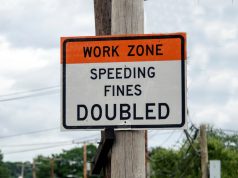
The Cost of Speed: Jeff Derderian Reviews Connecticut’s New Measures to Save Lives in Work Zones

Sean Casterline of Orlando on the Power of Networking: Building Career Success through Professional Associations

EVEN MORE NEWS

The Cost of Speed: Jeff Derderian Reviews Connecticut’s New Measures to...

Sean Casterline of Orlando on the Power of Networking: Building Career...
Popular category.
- Latest Stories 4702
- Trending 4146
- What to do 133
- do not include in newsletter 84
- Privacy Policy
- Questions & Concerns

IMAGES
VIDEO
COMMENTS
Example of a Great Essay | Explanations, Tips & Tricks. Published on February 9, 2015 by Shane Bryson . Revised on July 23, 2023 by Shona McCombes. This example guides you through the structure of an essay. It shows how to build an effective introduction, focused paragraphs, clear transitions between ideas, and a strong conclusion.
with a strong analytical question that you will try to answer in your essay. Your answer to that question will be your essay's thesis. You may have many questions as you consider a source or set of sources, but not all of your questions will form the basis of a strong essay. For example, your initial questions
When we refer to essay structure, we mean the way the essay looks on the page and the specific paragraphs used to create that look. If you look at an essay, you will see that it is made up of several paragraphs. It is easy to tell where a new paragraph begins because they are indented. In Word, we create an indentation by pressing the "Tab ...
Strategy #2: Use subheadings, even if you remove them later. Scientific papers generally include standard subheadings to delineate different sections of the paper, including "introduction," "methods," and "discussion.". Even when you are not required to use subheadings, it can be helpful to put them into an early draft to help you ...
Writing an Introduction. Section One is a neutral sentence that will engage the reader's interest in your essay. Section Two picks up the topic you are writing about by identifying the issues that you are going to explore. Section Three is an indication of how the question will be answered. Give a brief outline of how you will deal with each ...
Standard American argumentative essays begin with an introduction that gives a main point (thesis). The thesis is supported by a series of body paragraphs with sub-points, and the essay ends with a conclusion. Below is a visual representation of this structure, adapted from the Seattle University Writing Center; on the back is an example of the ...
Most essays follow a similar structure, including an introduction, body paragraphs, and a conclusion, as shown in the diagram below. Click on the plus icons for more information. ... Sample introduction [1] Business leadership has been described as the 'ability to influence, motivate and enable others to contribute to the effectiveness and ...
In essence, an essay structure definition refers to your writing plan that generally consists of an introduction, body, and conclusion. An introduction establishes the tone and purpose of your writing. It includes a thesis statement, which is the central idea to be explored. The body presents evidence, analysis, and supporting details to back ...
The general essay structure contains three main parts. These include the introduction, body, and conclusion. Using this format, you can easily write and ensure that your academic essay is perfectly organized. With this basic academic essay structure in mind, you should stick to the topic to guide your ideas and their sequence.
An essay is a piece of non-fiction writing with a clear structure: an introduction, paragraphs with evidence and a conclusion.Writing an essay is an important skill in English and allows you to ...
An essay consists of three basic parts: Introduction. Body. Conclusion. The essay itself usually has no section headings. Only the title page, author declaration and reference list are written as headings, along with, for example, appendices. Check any task instructions, and your course or unit handbook, for further details.
Parts of an essay. An impactful, well-structured essay comes down to three important parts: the introduction, body, and conclusion. 1. The introduction sets the stage for your essay and is typically a paragraph long. It should grab the reader's attention and give them a clear idea of what your essay will be about.
There are no set rules for how to structure a college application essay, but you should carefully plan and outline to make sure your essay flows smoothly and logically. Typical structural choices include. a series of vignettes with a common theme. a single story that demonstrates your positive qualities. Although many structures can work, there ...
Here are the key takeaways for how to write essay introduction: 3. Hook the Reader: Start with an engaging hook to grab the reader's attention. This could be a compelling question, a surprising fact, a relevant quote, or an anecdote. Provide Background: Give a brief overview of the topic, setting the context and stage for the discussion.
Clear Purpose: An academic essay is written with a clear purpose, often to argue a point, present an analysis, or discuss a research finding. The purpose guides the structure and content of the essay. Structured Format: It follows a structured format with an introduction, body paragraphs, and a conclusion.
Body Paragraphs. Each body paragraph in a critical thinking essay should focus on a single idea that supports the thesis. Start with a topic sentence that clearly states the main point of the paragraph. Follow this with evidence, which could include quotes, data, or examples from credible sources. Analyze this evidence critically, explaining ...
Essay Example: The Indigenous teepee, an emblematic symbol entrenched in North American Indigenous heritage, stands out as an enduring representation of Indigenous ethos. This iconic conical abode, historically affiliated with Plains tribes, embodies not merely a pragmatic and adaptable dwelling
Table of contents. Step 1: Identify the paragraph's purpose. Step 2: Show why the paragraph is relevant. Step 3: Give evidence. Step 4: Explain or interpret the evidence. Step 5: Conclude the paragraph. Step 6: Read through the whole paragraph. When to start a new paragraph.
2. Craft a Thesis Statement. Once you have mapped out the differences and similarities between your topics, you will start to understand the relationship between the subjects you are comparing. This, in turn, helps you craft a strong thesis statement that functions as a road map for your essay.